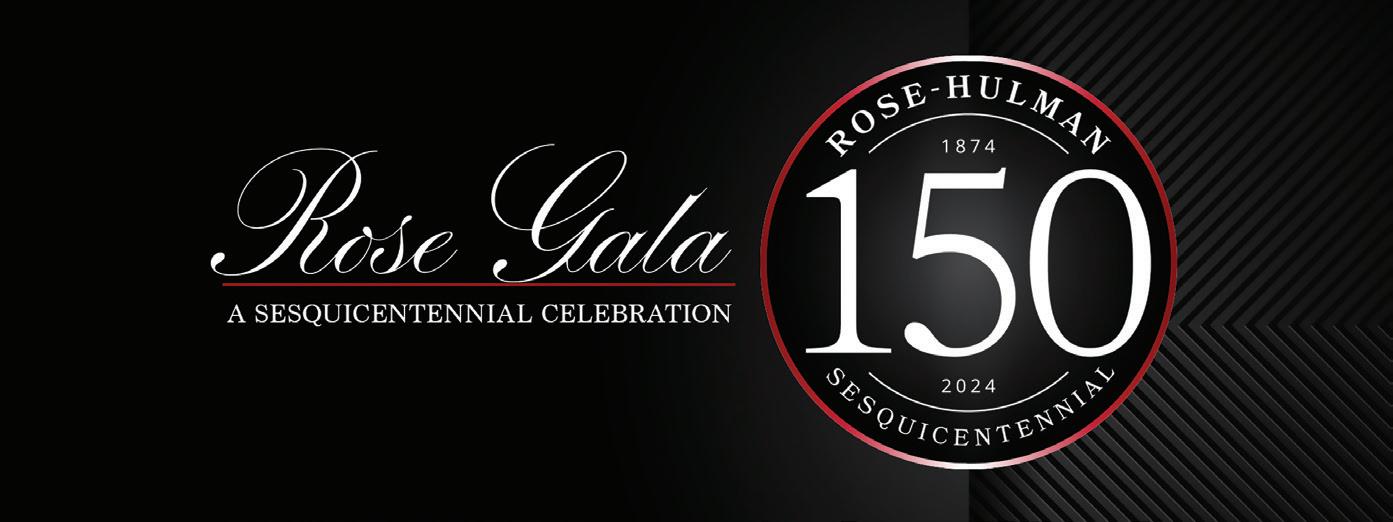





A TRANSFORMATIVE TIME 1924-1974




THE MIDDLE 50 YEARS
ROSE-HULMAN INSTITUTE OF TECHNOLOGY









A TRANSFORMATIVE TIME 1924-1974




THE MIDDLE 50 YEARS



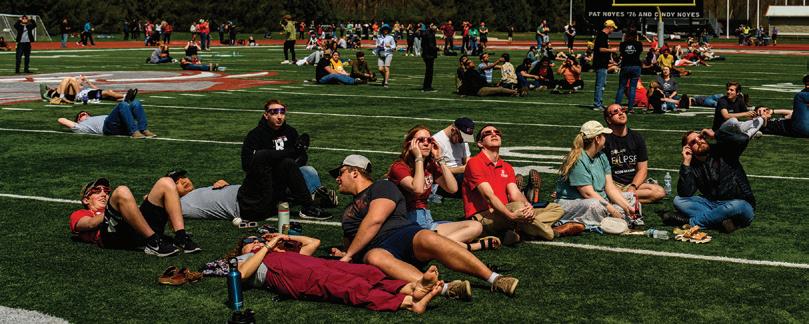


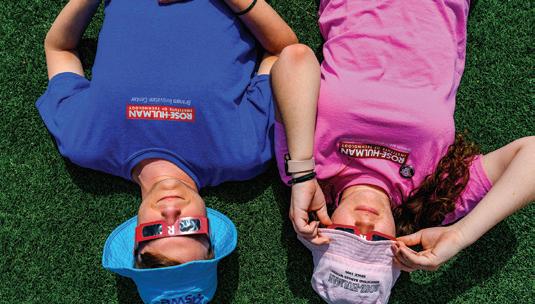
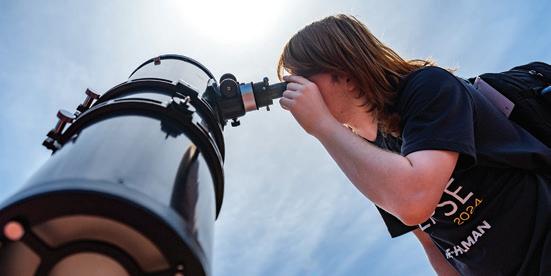
This spring’s total solar eclipse may have lasted less than four minutes, but its awe-inspiring splendor left a lasting impression on the more than 1,100 students, alumni, faculty, staff, and their family and friends who witnessed this unique event on campus.


“Science, and especially astronomy, put on quite a show,” said Assistant Professor of Physics and Optical Engineering Elizabeth Melton (PH/MA, 2015), PhD, whose role as Director of Rose-Hulman’s Oakley Observatory included organizing educational activities for the campus event. “It was quite an experience and a special day that we (Rose-Hulman) could share with so many others.”
The Office of Alumni Relations reports that approximately 500 alumni had registered to attend the eclipse viewing party, taking advantage of the opportunity to take close-up views of the historic event through high-powered telescopes in Oakley Observatory and other smaller portable telescopes scattered around Cook Stadium. Guests also could watch elements of the eclipse unfold from a broadcast shown on a large video scoreboard at the stadium.

The eclipse’s path of totality put Rose-Hulman in a prime location for guests to put on Rose-branded safety solar-viewing glasses, look skyward, and witness the historic event.
Making a trek from Chicago to join in the fun were Walter Flood (CE, 1975), his son, Walt Flood IV (CE, 2003), two grandchildren, and a niece.
“Any day that I can spend with my son and grandchildren is special, but this made it even more grand,” said Walter.
Walt added, “Upon learning that Rose-Hulman was inviting alumni to this special eclipseviewing event, I just knew we had to be here. Rose is just a special place with special people. This event and day made it even more unique.”
Recently retired Mechanical Engineering Professor Thom Adams (ME, 1990), PhD, said, “It’s such a serene occurrence when the sun, moon, and Earth are in such perfect alignment, and we get to witness it right before our very eyes. Science is so cool.” He is hoping to view another solar eclipse during 2028 while living in Spain after retirement.

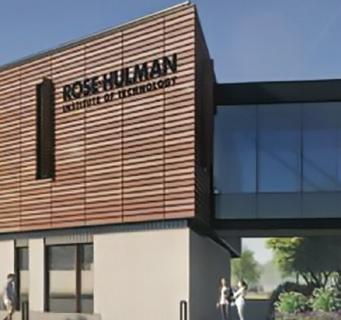
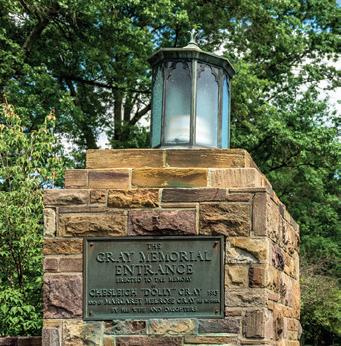
Vice President for Communications and Marketing: Santhana Naidu
Vice President for Institutional Advancement: Steven P. Brady
Alumni Association President: Nellie Hohne, Class of 1999


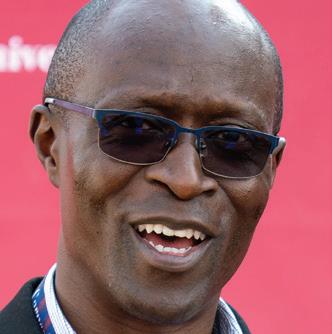

Historical Contributions: “Rose: The First One Hundred Years,” by John K. Bloxsome (HDLL, 1970); “A Legacy from Chauncey Rose,” by Alfred Schmidt (ME, 1949); Indiana State Library’s Indiana Memory Digital Archives; Assorted Modulus Yearbooks; and Athletic Records
Office of Alumni Relations: Carrie Bose, Special Events Coordinator; Mel Hayes, Assistant Director of Alumni Experience; Holly Kowalski, Administrative Assistant; Caitlin Nash, Assistant Director of Institutional Advancement Communications; and Charlie Ricker, Director Office of Communications and Marketing: Bryan Cantwell, Photographer; Hyung-Jung Chang, Graphic Designer; David Essex, Multimedia Producer; Ashlan Fortner, Marketing Manager; Shaun Hussey, Email and Web Communications Manager; Dale Long, Executive Editor and Director of Media Relations; Paul Shepherd, Senior Director; Steve Voltmer, Web Developer; and Majel Wells, Communications and Operations Manager
Executive Editor: Dale Long
Cover & Page Design: Chris Denison
Contributors: Tim All, PhD; Sylvia Carlisle, PhD; and John McSweeney, PhD, Associate Professors of Mathematics; Kristopher Ligget, Associate Institute Librarian/Archives
Contributing Photographers: arcDESIGN, Tom Baker (CHEM, 1992), Caterpillar Inc., Nick Carney/CMU-Africa, Marc Lebyrk/TechPoint, Naval Facilities Engineering Systems Command, Naval Surface Warfare Center-Crane, Mic Orman, Cory Pardieck (BSBE, 2014/MSEMGT, 2016), RATIO Architects, Shawn Spence, Elizabeth (Beller) Staryak (CE, 2009), Conrad Tucker (ME, 2004), and Gary Ulrich (BIO, 2017)
Class Notes/Alumni News Contact: Send alumni news and address updates to alumnirelations@rose-hulman.edu
Echoes is published by:
Rose-Hulman Institute of Technology 5500 Wabash Ave., Terre Haute, IN 47803
Echoes Contact: Dale.Long@rose-hulman.edu
Digital copies of this and past issues are available at www.rose-hulman.edu/echoes
It is the policy of Rose-Hulman Institute of Technology to admit students on the basis of their academic ability. Rose-Hulman Institute of Technology does not discriminate based on race, religion, color, national origin, sex, age, citizenship status, disability, veteran status, or sexual orientation.

AUGUST
Cincinnati Happy Hour | August 10
Pittsburgh | August 15
Detroit Dream Cruise | August 17
SEPTEMBER
Virtual Toast | September 10
Chicago Happy Hour | TBD
Naperville, Illinois Happy Hour | TBD
Denver Happy Hour | TBD
Salt Lake City Happy Hour | TBD
Philadelphia Happy Hour | TBD
Washington, D.C. Happy Hour | TBD
OCTOBER
Reunion Celebrations | October 4-5
Rose Homecoming | October 4-6
NOVEMBER
Indianapolis Happy Hour | TBD
Louisville Happy Hour | TBD
Detroit Happy Hour | TBD
DECEMBER
Campus Sesquicentennial Closing/ President’s Holiday Party | TBD
— ‘Cheers to 150 Years,’ led by President Coons

Learn more about significant milestones in Rose-Hulman’s 150-year history at rose-hulman.edu/150events
Stories play a critical role in shaping our beliefs, our values, and our culture. We use them to educate, to entertain, to inspire, and they provide a way to simply make sense of the world around us. Our most recent Commencement was a meaningful time to celebrate some of our stories. We reviewed the stories

BY ROBERT A. COONS , PRESIDENT coons@rose-hulman.edu
of the members of the Class of 2024, stories that led them to Rose-Hulman to share a chapter in our Institute’s own story.
Our Institute’s story consists of 150 years of stories that have brought Rose-Hulman to this Sesquicentennial Celebration. It seems a fitting time to reflect on the remarkable journey that has brought us to this milestone. Our Institute’s rich history is filled with stories of innovation, entrepreneurship, and discovery that have shaped not only Rose-Hulman Institute of Technology, but also the world around us.
Our Sesquicentennial Celebration is more than just a commemoration of the past; it is an opportunity to project forward and envision the future. We have an exciting lineup of events planned nationwide this year, bringing our alumni together to celebrate this significant milestone and envision the future together. (See the full event schedule on Page 3.)
One of the highlights of our Sesquicentennial Celebration will be the first Rose Gala, a formal event taking place during Homecoming weekend at the new Terre Haute Convention Center. This event will include cocktails, dinner, and live entertainment. More details about how to purchase tickets will be coming soon. We hope you will join us for an evening of celebration and connection.
“ Our sesquicentennial celebration is more than just a commemoration of the past; it is an opportunity to project forward and envision the future.”
“ Our alumni have always pushed the boundaries of what is possible ... Their achievements are a testament to the enduring values of innovation, collaboration, and perseverance that define Rose-Hulman.”
As we reflect on the 150 years of Rose-Hulman, we recall some of the unprecedented challenges we have faced and overcome together. Our resilience and determination, honed through shared experiences, have prepared us well for the future. These skills will continue to guide us as we navigate new challenges and opportunities. Our alumni have always pushed the boundaries of what is possible, contributing to countless advancements. They have been instrumental in breakthroughs that have transformed industries and improved lives, from color television and semiconductors to medical technology and space exploration. Their achievements are a testament to the enduring values of innovation, collaboration, and perseverance that define Rose-Hulman.
As we spotlight Rose-Hulman’s Sesquicentennial stories in Echoes (Pages 11-15) and on our website (rose-hulman.edu/150), I hope they fill you with as much wonder and pride as I experience when I read them. These stories are a powerful reminder of the impact our community has had and will continue to have on the world.
The Sesquicentennial Celebration is more than a birthday—it is a moment to reaffirm our commitment to the values that have sustained us for 150 years. It is a time to dream big, take risks, and challenge ourselves, sustaining our legacy of excellence and innovation.
As we look ahead, one can only imagine the remarkable stories that will unfold in the years to come. What will we achieve that will be celebrated 150 years from now? While we cannot predict the future, we remain confident that the legacy of Rose-Hulman will continue to thrive through the continued amazing contributions of our alumni, students, and community.
I look forward to following the stories of our new Class of 2024 and everyone else who shares a connection with Rose-Hulman. Together, we will continue to have a positive impact and extend the powerful legacy of our institution.
Here’s to another 150 years of remarkable achievements and inspiring stories. n
As Rose-Hulman celebrates its 150-year legacy, the stakeholder-focused “Advanced by Design” Strategic Plan sets the framework throughout the next decade, committing the Institute to continue being a leader in undergraduate science, engineering, and mathematics education.
It is bold. It is visionary. It is comprehensive.
“As we look to the future, it is now our moment to collectively carry forward the spirit of innovation, dedication, and community that has defined Rose-Hulman for 150 years,” says President Robert A. Coons while announcing aspects of the strategic plan at a special campus Sesquicentennial

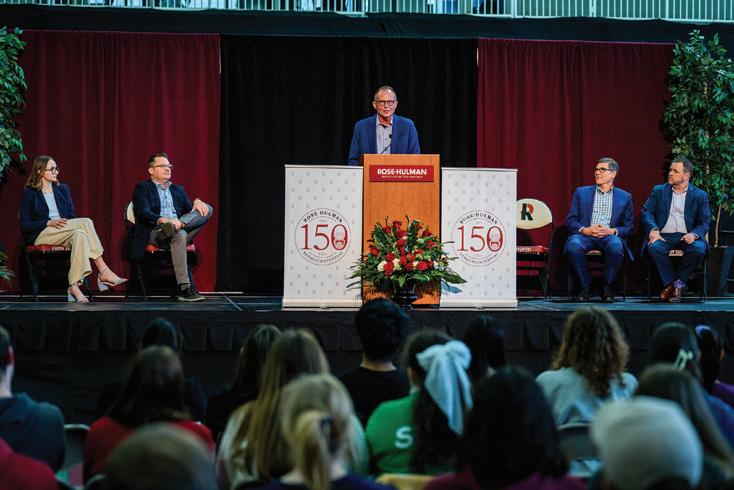
Celebration this spring. “Together, we will continue to advance by design, shaping a future that not only meets but exceeds our wildest dreams.”
As the Institute looks ahead, Coons highlighted a several significant achievements from its storied history:
• The college’s founding in 1874 by entrepreneur, business leader, and philanthropist Chauncey Rose.
• The Rose Show, Rose-Hulman’s version of the World’s Fair, showcased student ingenuity and creativity to the community.
• Welcoming the first co-ed class of students in 1995, embracing a richer, more diverse community of scholars.
• Being ranked No. 1 in undergraduate engineering education for the past 25 years, a testament to the unwavering dedication and talent of the faculty, staff, students, and alumni.
“As we stand on the shoulders of this remarkable legacy, I am convinced that our best days are still ahead,” remarks Coons, who has been a campus leader for 35 years and president since 2018. “This plan is a reflection of our collective vision—a commitment to not just sustain,
“ Let’s seize this moment. Let’s challenge ourselves to think differently, to act boldly, and to change the world for the better.”
Darin Moody (CHE, 1987) Rose-Hulman Trustee
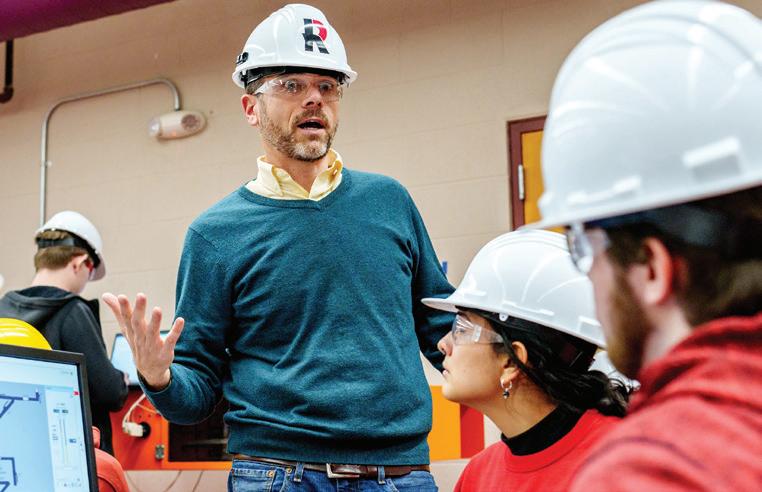
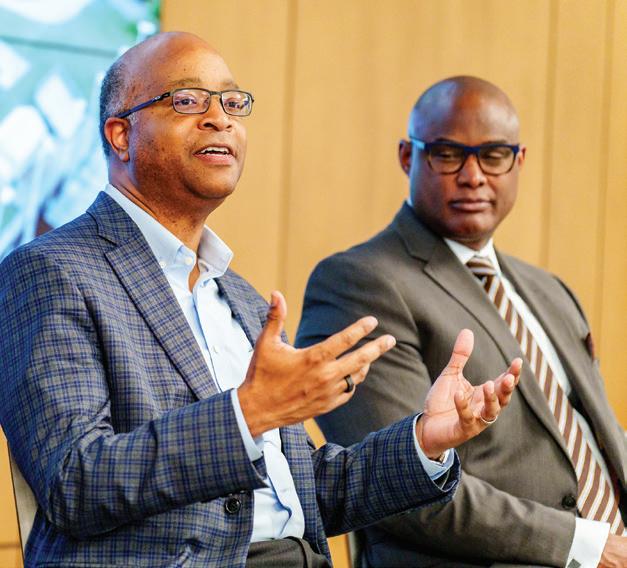
“
but to elevate our legacy, ensuring that innovation, sustainability, and leadership feed into our mission to provide the world’s best undergraduate STEM education in an environment of individual attention and support.”
Board of Trustees member Darin Moody (CHE, 1987) says Advancing by Design provides a roadmap for transformation that will propel the Institute into a new era of innovation and impact. After all, Rose-Hulman has had a commitment to continuous improvement, a dedication to lifelong
“ Engineers are not in the business of predicting the future. We’re in the business of creating the future.”
Rick Stamper, PhD (ME, 1985)
Provost & Vice President for Academic Affairs
learning, and a relentless pursuit of excellence.
“Let’s seize this moment. Let’s challenge ourselves to think differently, to act boldly, and to change the world for the better,” he says. “As we honor our past, we need to embrace the future with open arms. Change is inevitable, but it’s how we respond to it that defines us.”
Provost and Vice President of Academic Affairs Rick Stamper (ME, 1985), PhD, adds, “Engineers are not in the business of predicting the future. We’re in the business of creating the future.”
Over more than two years, the Institute reached out to more than 1,000 stakeholders—including alumni, corporations, parents, faculty and staff, and current students—to collaborate and provide input for the Advancing by Design Strategic Plan. They were
ON NEXT PAGE 10)
• Infuse Sustainability into the Rose-Hulman Education and Culture
• Instill a Mindset of Innovation, Discovery, and Entrepreneurship
• Prepare Students to be Leaders in a Global and Diverse Society
• Increase the Affordability and Value of a Rose-Hulman Education

View aspects of the full plan at Rose-Hulman.edu/StrategicPlan

Development of a campus entrepreneurial ecosystem is underway with seeds being planted for an Innovation Grove district featuring amenities that will provide students with additional internships and hands-on experiences to gain the skills needed to thrive in a rapidly changing world. It is one of the centerpieces of the “Advancing by Design” Strategic Plan. The site on the former Hulman Farm property adjacent to the main campus will feature the relocation of Rose-Hulman Ventures (RHV), space for Rose-Hulman’s new entrepreneurial Sawmill Society network, and a transformative partnership between the Institute, Union Health, and Indiana Joint Replacement Institute (IJRI). There’s also a long-term vision to further leverage Rose-Hulman faculty expertise, student ingenuity, and industry partnerships to fuel economic growth in the Wabash Valley.
“As we continue to identify ways to strengthen our presence globally, our vision is that Innovation Grove will be a thriving, self-sustaining entrepreneurial center that houses advanced labs and testing facilities, a greatly expanded client base, and, most importantly, valuable handson and immersive learning opportunities that enhance our students’ classroom and


laboratory educational experiences,” says President Robert A. Coons.
RHV is an engineering service provider specializing in innovation stage projects that blends experienced engineers and project managers with student interns to solve real-world problems with industry partners. It is currently located on the Institute’s South Campus, several miles away from campus.




The Rose-Hulman, Union Health, and the IJRI partnership will drive new technological advancements in the health care industry, provide hands-on experience for students, and bring patients from all over the Midwest to Terre Haute for orthopedic joint replacement surgeries in a 40,000-square-foot

state-of-the-art outpatient surgery center and medical office that will be adjacent to Rose-Hulman Venture’s main building in Innovation Grove.
IJRI Chief Executive Officer Michael Meneghini, MD, a 1995 civil engineering alum, has partnered with Rose-Hulman faculty and RHV in the past on orthopedics research and development—laying the foundation for this latest partnership.
“This exciting venture is a unique collaboration fostering innovation in biomedical engineering education, research and development and the highest quality patient care in hip and knee replacement,” says Meneghini. “This will provide a unique destination for students, industry partners, engineers, surgeons, health care professionals, and patients to experience the latest advancements in orthopedic hip and knee replacement surgery.”
IJRI’s two-story facility will have up to four operating rooms, 14 recovery beds, X-ray, physical therapy, and approximately 20-24 exam rooms.
The partnership brings together nationally recognized leaders in undergraduate STEM education and joint replacement surgery to leverage their respective strengths. Students will gain real-world experience in biomedical device development, providing a unique environment to foster innovation and research in the field and promote the highest quality patient care.
“This new pathway will allow the best and brightest students in STEM to collaborate alongside skilled orthopedic surgeons,” states President/CEO of Union Health Steve Holman .


Funding to accomplish Innovation Grove’s goals will come from various private philanthropic sources along with federal, state, and community support. Efforts are currently underway to secure additional grant funding to further the longer-term vision. n



Students, faculty, staff, and alumni kicked off the year-long Sesquicentennial Celebration with a campus event that featured historical highlights, giveaways, a 150-foot submarine sandwich, and photo opportunities with Rosie, the Institute’s lovable elephant mascot. Afterward, renowned educator, author, and nationally known internet personality Hank Green answered questions as part of a new student leadership development series supported by John Swearingen (BSCHE, 1981/HDENG, 2024) and his wife, Anne.

(CONTINUED FROM PAGE 7)
asked to consider how Rose-Hulman should rise to the challenge of the future by enhancing our offerings to students, creating new opportunities for students, and defining and ensuring student success to becoming the educational institute of choice throughout the world.
“We had this magic of all these people coming together,” says Associate Professor of Chemistry and Biochemistry Stephanie Poland, PhD. “As we got all these new ideas coming together, it helped us recognize the needs of society. That’s exactly what scientists and engineers should be doing.”
The strategic plan elements support the Institute’s core mission of providing students with the world’s best undergraduate science, engineering, and mathematics education in an environment of individual attention and support.
“We are fundamentally changing the way [students] think about the world and
how they interact with it,” says Assistant Professor of Mechanical Engineering Michael Canino, PhD.
The Sesquicentennial Celebration featured contributions from Dean of Students and Vice President for Student Affairs Erik Hayes (BSME, 1997/MSME, 2001) and past Student Government Association President Courtney Valmore (CHE, 2024). Faculty featured in a video on developing the Advancing by Design Strategic Plan were Craig Downing , PhD, Associate Dean of Lifelong Learning and Head of the Department of Engineering Management; Sriram Mohan, PhD, Head of the Department of Electrical and Computer Engineering; Ella Ingram, PhD, Professor of Biology and Biomedical Engineering; and Adam Nolte , PhD, Professor of Chemical Engineering. n
Our graduates will continue to be inspired and prepared for lives of purpose and success, defining and solving the problems of a complex global society.
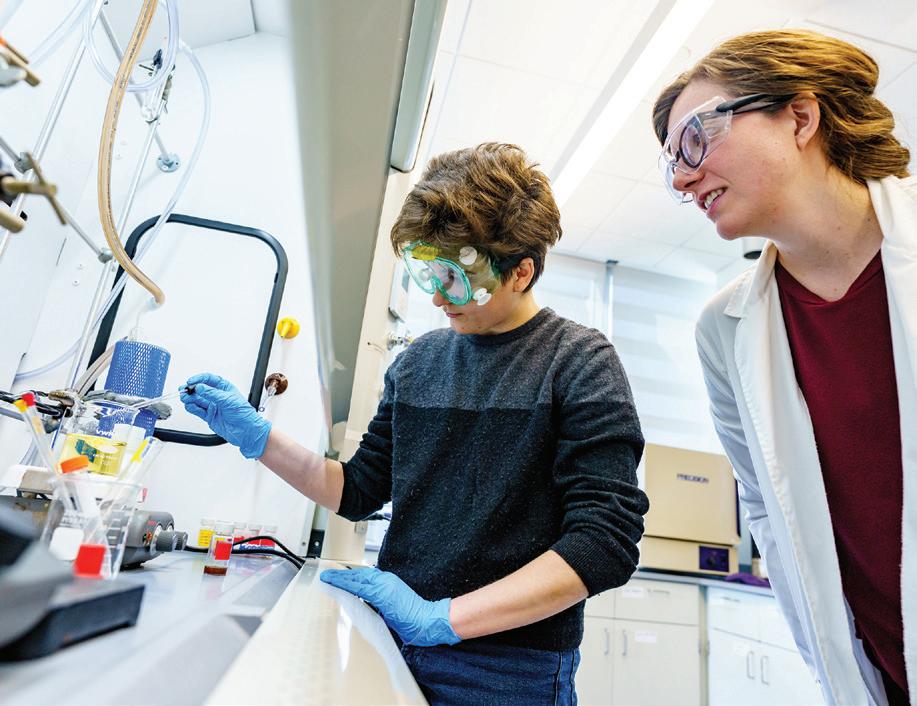
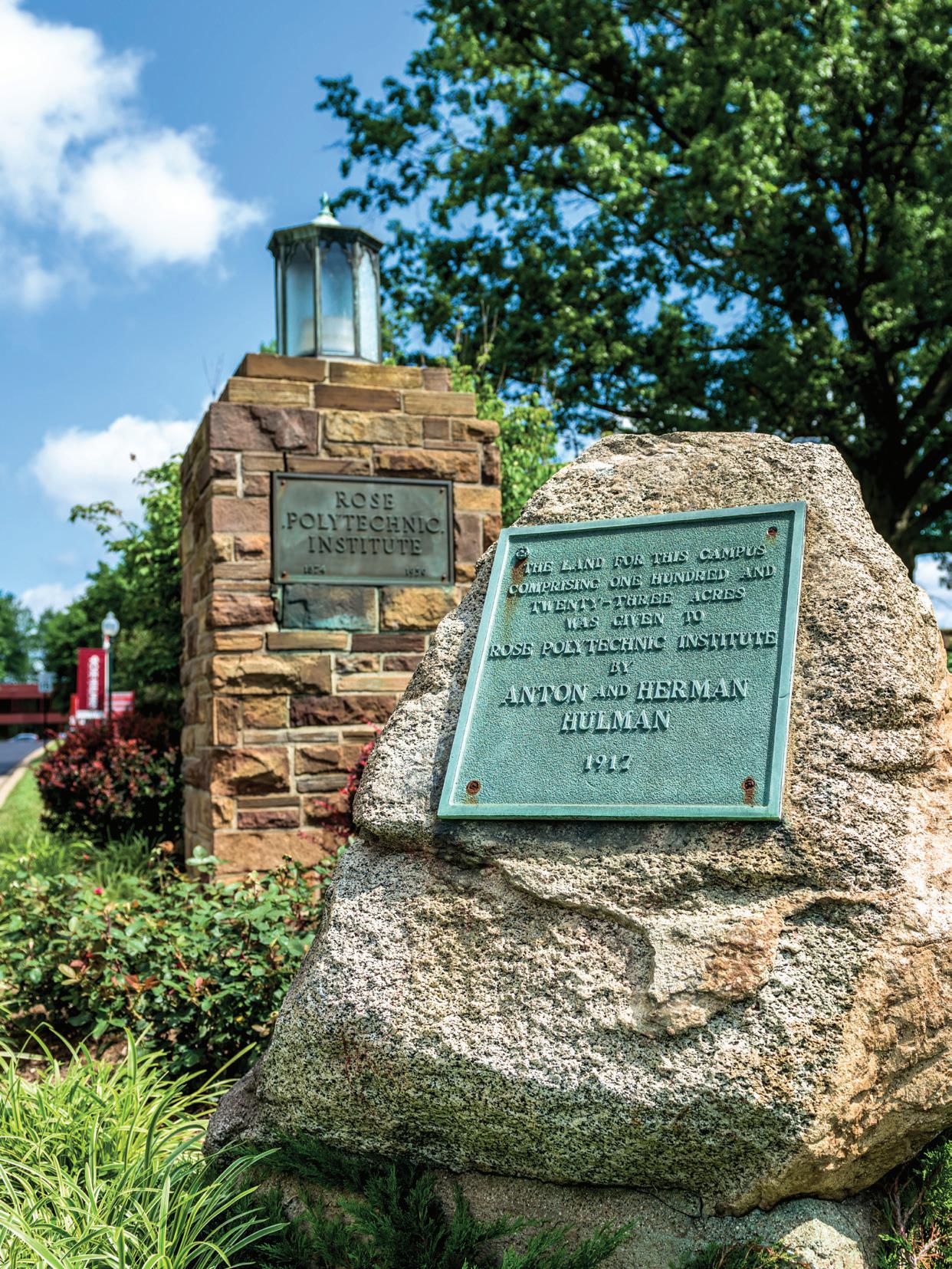
After moving to its present location in 1922, Rose Polytechnic Institute settled into its new country home to enjoy the next 50 years of its history. This period, from 1924-1974, would be filled with fiscal challenges, expansion of student enrollment and campus buildings, technological adaptation, and strengthening of the strenuous academic programs that would become a hallmark of the college and a guiding force for its alumni to make a difference in their STEM career fields.
(CONTINUED ON NEXT PAGE)
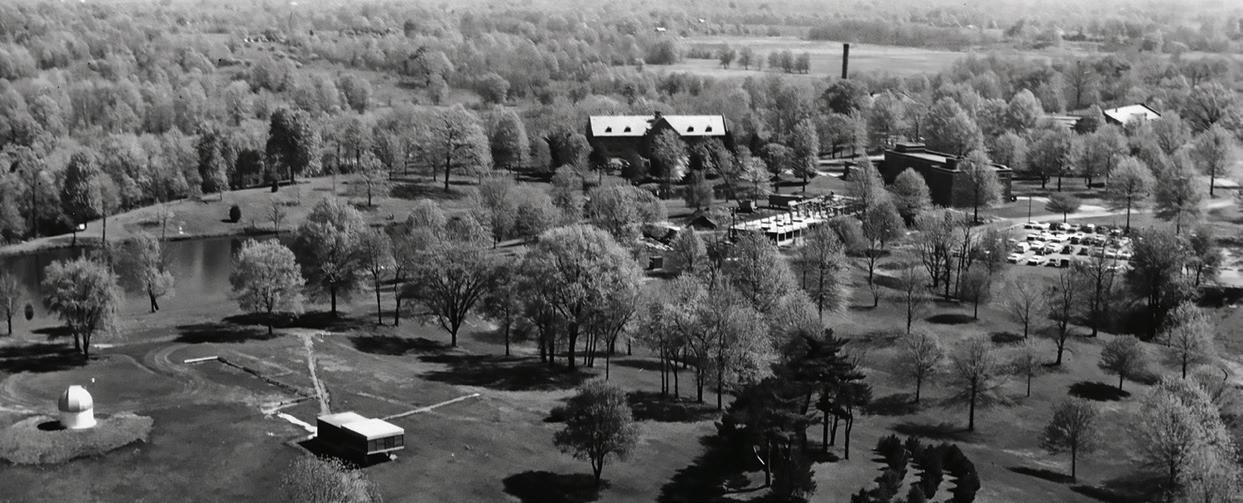
(CONTINUED FROM PREVIOUS PAGE)
The end of this era also brought forth a new name, Rose-Hulman Institute of Technology, following the generosity of Anton Hulman Jr. and his wife, Mary Fendrich Hulman, in turning over assets of the Hulman family’s foundation—valued at more than $11 million—to the Institute in 1971 to continue their family’s tradition of philanthropy toward the college. There had been other contributions by the Hulmans throughout the years, including support to build the first formal student union building. This was a time of transformational change for the Institute—one of several throughout its 150-year history. The campus landscape expanded with new buildings for academics, residence life, and student services; enrollment slowly grew to exceed 1,000 students; and several new academic programs were added to the curriculum to meet the technical changes in society and growing demand for STEM graduates.

Rose’s prestige also grew as the college started attracting students from throughout the country and world. Many of these students had strong academic backgrounds. In fact, by the mid-1970s, more than 90% of the Institute’s student body had been ranked in the top 5% of their high school graduating classes.
These students were challenged by quality professors in every academic department, including an expanded humanities and social sciences area emphasized by President John Logan. Notable professors included Herman Moench, who had a glorious 56-year career as an electrical engineering educator and Institute administrator (twice serving as interim president); John L. Bloxsome, an English professor for 41 years who wrote a book chronicling Rose’s first 100-year history; Darrell Criss, computer science; Clarence P. “Doc” Sousley, a faculty member for 24 years; Ted Palmer in mathematics; Oran Knudsen in chemical engineering; Irv Hooper in mechanical engineering; Robert McCormick , civil engineering; and C. Leroy Mason, physics.
And, of course, the staff increased to provide students with additional services and support. Former professor Ralph Ross became the first full-time Dean of Students, assisted by Jess Lucas
Throughout this period, the personal touch continued to be a foundational spirit within the campus community.
HISTORICAL TIMELINE: 1924-1974
as being a student center, dining area, and having several small classrooms; construction cost was $100,000.
JUNE Radio station WRPI-AM began broadcasting on campus.
SPRING Community residents came to campus to view the first Rose Show scientific open house; the event would become a popular annual event, attracting hundreds of guests to view Rose Poly’s version of the World’s Fair.
FALL The football team had its first undefeated season in Rose history with a 7-0 record; team only allowed 34 points, ending the season with two straight shutouts.
Twenty old Navy barracks were erected on campus for single and married student residence housing.
FALL Wilbur Shook (BSARCH, 1911/HDENG, 1956) donated a surplus B-29 airplane hangar that became a fieldhouse for athletics and student recreation on campus; building was later named Shook Fieldhouse in 1961 to honor his many contributions to the Institute.

The former gymnasium (top floor of the Main Building) was remodeled into an auditorium for large campus meetings, special events, drama club performances, and club activities.
The campus’ first formal student center was opened, with spaces for students to gather and relax between classes; it later became the Templeton Administration Building in honor of Robert J. Templeton (CE, 1914) 1926
The opening of the Baur-Sames-Bogart Hall brought more students to live on campus; it was named in honor of Oscar Baur (BSME, 1987/HDENG, 1950), Charles Sames (ME, 1986), and Paul N. Bogart (former trustee).
Degrees in chemistry, mathematics, and physics were added to the curriculum.
FALL 1958 The football team had one of the greatest seasons in Rose history with an 8-0 record; Carl “Rocky” Herakovich (CE, 1959) earned Associated Press Little College All-America honors after leading the nation in scoring (168 points); team outscored the opposition by a 270-31 margin.

The Institute’s landscape expanded to provide the growing need of providing classrooms, laboratories, residence life, and student services as enrollment expanded at steady rates, starting in the late 1950s.
The first residence hall, Deming Hall, was opened in the fall of 1926, and also served as a student center and dining area, along with having several small classrooms.
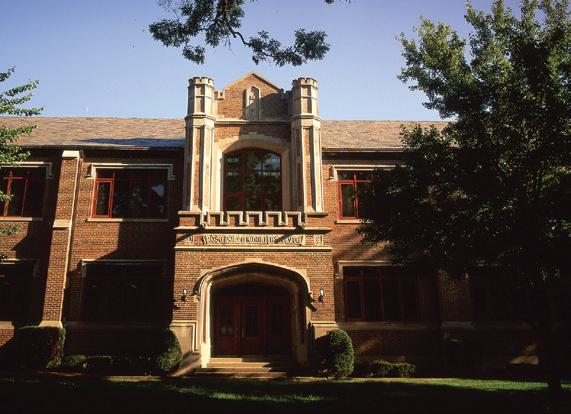
The Lynn H. Reeder observatory was added to the west end of campus.
JANUARY Speed Hall was opened to meet the growing demand for student campus housing; 85 students moved in to start the second semester; the building was named in honor of William Speed (BSEE, 1895/HDENG, 1933).
A degree in biological engineering was added to the curriculum.
JUNE The Hulman Memorial Union was dedicated to showcase the longstanding support of the Hulman family to the college.
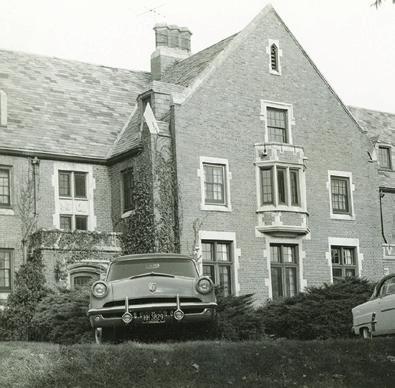
A building boom commenced in the late 1940s as the campus started spreading across its 123-acre site. Twenty old Navy barracks were erected on campus in 1946 for single and married student residence housing and two years later a surplus B-29 airplane hangar, donated by 1911 architecture alumnus Wilbur Shook, became a fieldhouse for athletics and recreation on campus. Its construction allowed for the former gymnasium on the top floor of the Main Building (now Moench Hall) to be remodeled into an auditorium for large campus meetings, special events, drama club performances, and club activities.
The campus’ first student center was opened in 1954, with spaces for students to gather and relax between classes. It was later replaced by a formal student union in 1966 with a dining room for students living on campus, a bookstore, and rooms for a growing list of student organizations.

The following residence halls were constructed to provide on-campus housing for the growing student population:
• Baur-Sames-Bogart Hall–1956
• Speed Hall—1963
• Blumberg, Mees, and Scharpenberg Halls—1968
Three social fraternities—Triangle, Phi Gamma Delta, and Delta Sigma Phi—moved onto the east side of campus.
Crapo Hall was opened in December of 1970 to provide additional classrooms for growing academic programs, especially the need for more foundational mathematics classes.
World’s fairs were in their heyday in the early 20th century, thrilling crowds with the wonders of the maturing industrial age. By 1927, Rose Polytechnic leaders chose to start their own miniature version of this global phenomenon, calling it The Rose Show, to impress the public with the remarkable work taking place by students on campus. Every two years from 1928 to 1940, this popular public event featured exhibits from each of the Institute’s academic departments and student clubs, along with outside companies and organizations.
The early shows took place over three days and attracted thousands of visitors to campus. The first featured 225 exhibits and attracted 3,486 paid guests. By 1932, attendance reached its
(CONTINUED ON NEXT PAGE)
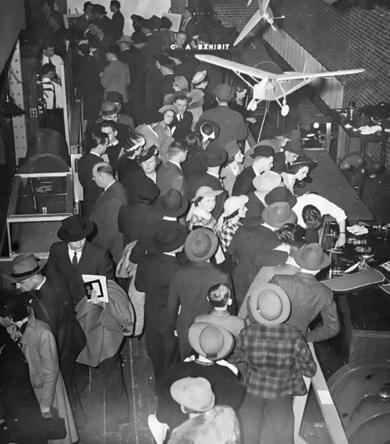
(CONTINUED FROM PREVIOUS PAGE)
peak with 6,765 people visiting 285 exhibits. Attendance remained well over 5,000 until the last show of this original period.
Featured exhibits from early Rose Shows included a modern sewage treatment plant, samples of X-rays and amplifiers, “Edisonia” (historical relics loaned by Thomas Edison), and a “Love-O-Meter.”
For unknown reasons, perhaps due to World War II, The Rose Show disappeared after 1940 and—with the exception of a one-day “Little Rose Show” in 1952—would not return until the Institute’s centennial year of 1974. It would then appear intermittently for the next 27 years and has resumed again as an annual display of student projects, attended by campus and community guests.
Learn more about the current Rose Show at rose-hulman.edu/roseshow
Mechanical engineering was the only major offered at Rose Polytechnic Institute during its early formative years, but that academic portfolio steadily expanded to meet the growing need of STEM professionals for America’s technological revolution of the 1950s, ’60s, and ’70s.
Degrees in chemistry, mathematics, and physics were added to the curriculum in 1958 with biological engineering following in 1966.
The purchase of the college’s first computer in the fall of 1960, under the leadership of Darrell Criss, PhD, provided a foundation for computer science to be added to the curriculum in 1968, within the Department of Mathematics.
Meanwhile, a master’s degree was adapted in the early 1930s, even though records show that the Institute presented its first master’s degree in 1892 to Toro Tsuiji, the son of a member of Japan’s ruling legislature.
The summer of 1967 brought the first group of rising high school seniors to campus for the pilot year of the new Operation Catapult summer STEM camp experience. The project-oriented program was popular from the start, with 67 students participating that first summer (higher than the original 40-student goal). Besides allowing students to study and do research in a STEM area of interest, the program also gave students a look at college life and an introduction to Rose-Hulman. It was founded by Director of Admissions Paul Headdy and math professor/ alumnus Alfred Schmidt (ME, 1949).
After more than 50 years, Operation Catapult may now be the oldest of its kind in the country and attracts students from throughout the country and world. They work in teams with a faculty mentor to complete a variety of hands-on projects that could be pulled from the day’s headlines: autonomous vehicles, e-commerce, biofuels, and material sciences, to name just a few.
TIMELINE CONTINUED
JUNE The first group of rising high school seniors attended the pilot year of the new Operation Catapult on-campus summer STEM camp; this project-oriented program allows students to study and do research in a STEM area of interest while also getting a look at college life.
1968
Computer science was added as a degree within the Department of Mathematics.
AUGUST The Triplet residence halls—— Blumberg, Mees, and Scharpenberg——were made available to welcome more students living on campus; named in honor of Charles Scharpenberg (BSCE, 1907/HDENG, 1964), Carl Leo Mees (former president/professor), PhD, and Benjamin Blumberg (benefactor).
1970
OCTOBER Crapo Hall was completed to provide additional classrooms for the growing academic programs; named in honor of Frederick Crapo (BSEE, 1919/ HDENG, 1963) and his wife Mildred.
DECEMBER Anton and Mary Hulman transferred all Hulman Foundation assets to the Institute; Name changed to Rose-Hulman Institute of Technology; IRS set donation value at $11 million, but the true value was unknown; the additional financial resources allowed for an increase of the faculty in many academic areas.
1974
FALL A New Learning Resource Center–renamed to honor former president John A. Logan–was opened.

You may be familiar with the institution and buildings bearing their names, but do you really know about these influential people in Rose-Hulman history?

Herman Moench
This memorable educator— affectionately known as “The Master Teacher”—spanned nearly all this 50-year era in Institute history. First, Moench was on campus as a student, earning an electrical engineering degree with high academic honors, in 1929. Then he had a distinguished 56year career as an instructor, professor, and administrator at his beloved alma mater before retiring in 1986. He twice served as acting president (1958 and 1961-62) and was Dean of Faculty (1962-65) and Senior Vice President/ professor (1966-86). Moench’s numerous honors included an outstanding teaching award from the American Society of Engineering Education and being Engineer of the Year from the Indiana Society of Professional Engineers. It’s no wonder that Rose-Hulman’s main education building was named in his honor in 1977 and the Moench Distinguished Senior Commendation is presented annually at Commencement.

Rose-Hulman had remarkable growth in enrollment (doubling to slightly more than 1,000 students), facility improvement, and academic prestige throughout Logan’s 14-year tenure as Rose president (1962-75). He emphasized a “liberal education in engineering and science” and helped bring additional financial resources to increase the Institute’s faculty, especially in areas of the humanities and social sciences. Logan also was a strong advocate for expanding student organizations, intramurals, and athletics. Major capital improvement projects completed under his leadership included the Blumberg, Mees, and Sharpenberg residence halls, Hulman Student Union, Crapo Hall, and the Learning Resource Center (later was named in his honor).
Before becoming a successful Terre Haute businessman and philanthropist whose ownership helped turn the Indianapolis Motor Speedway into the Racing Capital of the World, Hulman served a brief stint as coach of the freshman football team at Rose Polytechnic Institute. He also carried on the Hulman family’s long relationship with the Institute by being a member of the Board of Managers and then with his wife, Mary, transferred all Hulman Foundation assets to the Institute, a gift estimated to have a $11 million value, as well as many other family contributions throughout the years. The college’s name was changed to Rose-Hulman Institute of Technology in recognition of this generosity. The Hulman family’s involvement with Rose continues today with Tony’s grandson, Tony George (HDENG, 2003), serving as a trustee.
Phil Brown
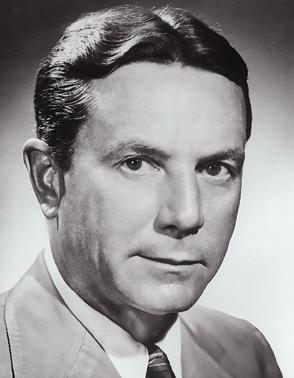

There may not have been a sport that Brown couldn’t coach, but the football gridiron is where he had his greatest success in leading the Fightin’ Engineers. Two of his teams have had the only undefeated seasons in Rose history (7-0 in 1941 and 8-0 in 1958) and he was named an All-American Coach in 1930 by the Cincinnati Enquirer. His 1958 team may have been led by Associated Press Little College All-American running back Carl “Rocky” Herakovich (CE, 1959), but it also had a resilient defense, outscoring the opposition by a 270-31 margin and allowing just 24 completed passes during the entire season. Overall, Brown had a 99-109-7 record in 31 seasons. The Institute’s football field was named in Brown’s honor in 1969 and he was inducted into the Indiana Football Hall of Fame in 1985. n

Learn more about significant milestones in Rose-Hulman’s 150-year history at rose-hulman.edu/150stories



Members of the Class of 2024 enjoyed a special graduation celebration this spring after a global health pandemic deprived many of them the opportunity to accept their high school diplomas on a public stage and amended aspects of Rose-Hulman’s normal new student orientation festivities.
The 454 graduates finally got to walk across the stage to get their hard-earned bachelor’s and master’s degrees–or both in some cases–during the Institute’s 146th Commencement.
Earlier in the week, they also got to participate in aspects of orientation that had been taken away: the Outdoor Adventure, class photograph, and Welcome Procession from the Sports and Recreation Center to Hatfield Hall, serenaded by bagpipers.
Two days later, they casually strolled the opposite direction on Commencement Day–and taking in every last minute of it.
“For many of us, this graduation represents not only the culmination of years of hard work and dedication, but also the triumph over adversity,” remarks past Student Government Association President Courtney Valmore (CHE, 2024).
“The COVID-19 pandemic tested our strength and determination in ways we never imagined.”
She continues, “Despite the obstacles we faced, we refused to be defined by them. Instead, we adapted, we persevered, and we thrived. For many of us, today might be the first and last time we ever walk across a stage, making this even more special for us than those that have come before. We may not have seen our faces behind a mask or been within six feet of each other for a year, but we gained something far more profound–a sense of resilience, unity, and community.”

“ I know that your gifts begin with a keen intellect and are nourished by perseverance and a mindset that is eager to continue learning and growing. I also know that your path is wisely guided by your own beliefs, interests, core values, and sense of purpose.”
— Robert A. Coons Rose-Hulman President
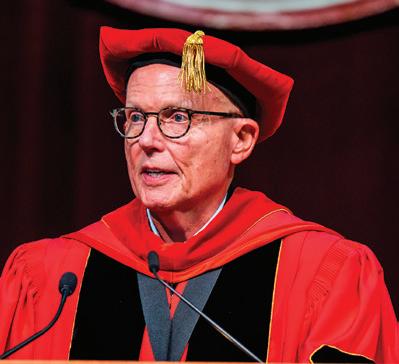


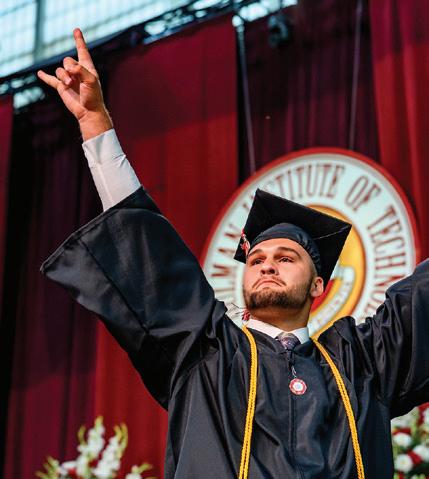
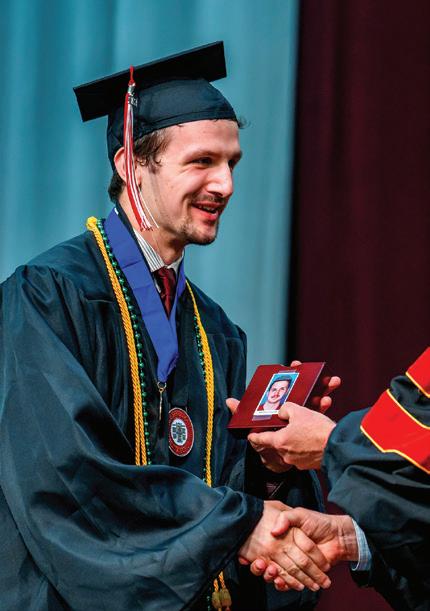

The Class of 2024 featured the following characteristics:
• 113 women (25%)
• 50 first-generation graduates (11%)
• 147 graduates declared of diverse and ethnic populations (32%)
• 34 states represented
• Nine international countries represented
A record 14 graduates were recognized with the Heminway Gold Medal for completing their academic careers with perfect 4.0 grade-point averages; a group brought distinction as members of the institute’s inaugural class of Noblitt Scholars; and two graduates were Goldwater Scholars, one of the nation’s top honors for undergraduate students planning advanced studies in STEM.
Also, the graduates’ future plans include working for such companies as Caterpillar, Eli Lilly and Company, Edgile, Texas Instruments, Marathon Petroleum, Procter & Gamble, Northrop Grumman, and Toyota. Graduate school plans include attending Princeton, Georgia Tech, Notre Dame, Cornell, Brown, Northwestern, Carnegie Mellon, Rice, Case Western, University of Michigan, University of Illinois, University of Kansas, and University of Washington.
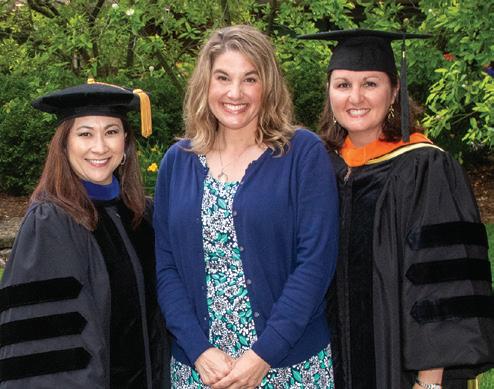

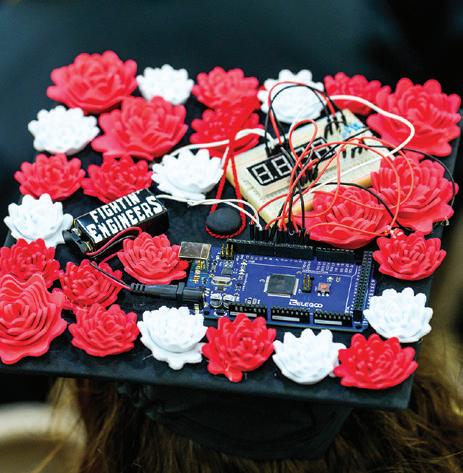
The numerous career, community, and institutional contributions of 1981 chemical engineering alumnus John Swearingen were recognized with an Honorary Doctor of Engineering degree. He had a successful 39-year career with Marathon Petroleum Corporation, retiring as executive vice president of logistics and storage in 2020.
John and his wife, Anne, have been faithful supporters of Rose-Hulman. They provided a generous donation to establish the Department of Chemical Engineering’s first endowed faculty professorship, along with supporting laboratory and technology modifications for the department. The couple also has supported scholarships and a new leadership series that’s encouraging the development of future leaders in STEM to solve complex problems.
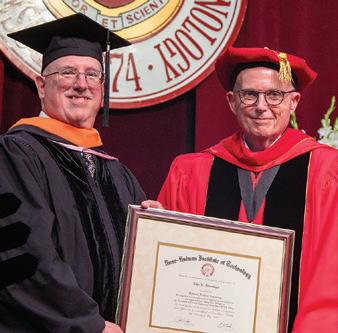
John T. Royse Award
Most outstanding graduate, based upon academics, student leadership, activities, and campus citizenship
Hannah Snider | Chemical Engineering/Biochemistry
Herman A. Moench Distinguished Senior Commendation
Commendable influence on the Rose community
Nyomi Morris | Computer Science
Heminway Gold Medal
Highest academic achievement
Olivia Davis | Computer Science/Mathematics
Ella Dorfmueller | Chemical Engineering

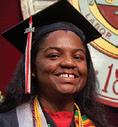
Michael Fraczek | Biology/Biochemistry and Molecular Biology


Zachary Gault | Computer Science / Software Engineering
Nathan Hurtig | Computer Science / Mathematics
Arjent Imeri | Optical Engineering / Nanoengineering
Andrew Kosikowski | Computer Science/Software Engineering/ Mathematics/Data Science
Yingeng Liu | Computer Science/Data Science
Tracy Orgera | Chemical Engineering
Nathan Quets | Electrical Engineering
Adithya Ramji | Computer Science
Hannah Snider | Chemical Engineering/Chemistry
Liam Waterbury | Software Engineering
Katherine Wood | Civil Engineering
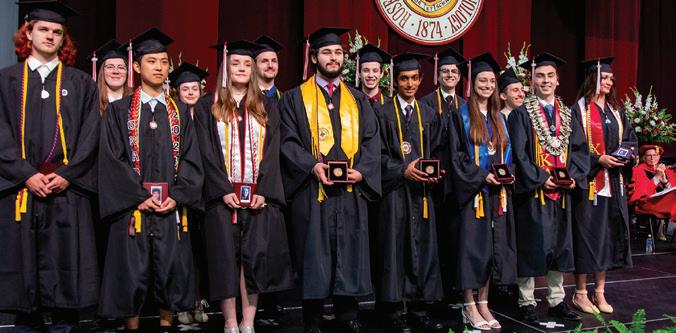
The first woman of color in the world to go into space, Mae Jemison, M.D., inspired the graduates as this year’s Commencement Address. She also received an Honorary Degree of Engineering.
Jemison is a former NASA Space Shuttle astronaut who also has made significant contributions as an entrepreneur, engineer, physician, educator, and humanitarian. She helped inspire several Class of 2024 members in her role as the first professional astronaut to appear in the “Star Trek” television series and she was featured as a LEGO mini figurine in the Women of NASA kit along with being Astronaut Mae in Public Broadcasting Service’s “Sesame Street” show.
Dean’s Outstanding Teacher
Kay C Dee, PhD | Associate Dean for Learning & Technology, Professor / Biology & Biomedical Engineering
Board of Trustees’ Outstanding Scholar
Nate Chenette, PhD | Associate Professor / Computer Science & Software Engineering
President’s Outstanding Service
Gary Meyer | Technician / Electrical & Computer Engineering
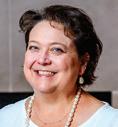

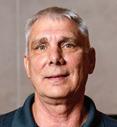
A $5 million expansion to the Sports and Recreation Center, currently underway, will provide additional facilities to meet the rising need for athletic and student recreation services and further enhance the nation’s top-ranked STEM college.
The addition to the east end of the building (top image at right), overlooking the outdoor Cook Stadium, will have two floors with seven offices, a locker room, an expanded storage area, and a dedicated recruiting room for intercollegiate athletics (bottom image at right). There will also be a large room with flexibility to host large group meetings or student recreational/fitness activities.

Construction is scheduled to be completed by spring 2025.
The Sports and Recreation Center served 312 student-athletes and 18 varsity sports in 1997. Today, 27 years later, Rose-Hulman’s 20 sports have more than 600 student-athletes and several more head and assistant coaches, along with additional support staff.

The fifth annual Giving Day was a memorable one this spring, with supporters contributing a record $650,223 through 667 gifts. These donations will help meet the college’s greatest needs, student scholarships, academic programs, student experiences, athletics, and more.
The total raised well exceeded the previous record of $508,607 set in 2023.
Several donors helped spur the giving with matching gift challenges. Those included significant gifts from the Cless Family in supporting student experiences and services. Susan and Dave Hoecker (ME, 1969) along with Victoria (CS, 2006) and Matt Ellis (CS, 2005) offered generous matching gifts in support of the college’s greatest needs, while Karen DeGrange, the family of the late Herb Bailey (EE/CHE, 1945), PhD, and Jason Carlyle (MA/CS, 1998) donated to support student scholarships. Lyle Carlson (CPE, 1991) contributed to cybersecurity initiatives, while the company Kalogon supported student competition teams in the Branam and Kremer Innovation Centers. Brent Mewhinney (EE, 1984) and Dana (CHE/ECON, 2006) and Jon Pierson contributed gifts in support of athletics, while Randy Potts (CHE, 1971) contributed to the ROTC program. Margo and Jack Fenoglio (CHE, 1959), and President Robert A. Coons and his Cabinet also supported the day with matching gifts.
$650,223
667

Elements of innovation, entrepreneurship, and sustainability–and sometimes a combination of all three–were showcased throughout more than 100 student projects featured in this spring’s Rose Show, the college’s annual version of the World’s Fair.

Projects completed this school year by first-year students through seniors across all academic areas addressed the needs of companies, organizations, and individual clients through mechanics, artificial intelligence, generative AI, Cloud computing, robotics, gaming, and software programming. Nearly every academic department was represented, including mathematics and humanities, social sciences, and the arts.
The William A. Kline Innovation Award went to StrapTech, a wireless monitoring strap tension device for the trucking industry.
Honorable mention awards went to DriveTEK, a portable, flexible driving simulator built to safely study the driving experience; an EcoBlaze chainsaw, designed to help California wildland firefighters; and a physical therapy car simulator for Union Health’s Physical Therapy Laboratory (updating an earlier version originally created by Rose students).
The new Swearingen Leadership Series had highly decorated STEM education advocate Kate Maxwell and inspiring author/entrepreneur Hank Green providing students with a variety of inspiration messages to follow in their footsteps as technology leaders.
Speaking on International Women’s Day, Maxwell’s “Launch Before You Are Ready” presentation featured such themes as embrace failure; aim for progress, not perfection; invention takes courage; and things are attainable if you stretch and reach for them.
Meanwhile, Green’s quizzical views of the world and science were featured in an engaging, thought-provoking, and entertaining Question-and-Answer session that had students filling the Sports and Recreation Center’s Hulbert Arena as part of the Sesquicentennial Celebration.
John Swearingen (CHE, 1981) and his wife, Anne, established the series to encourage development of future leaders in STEM to solve complex problems.
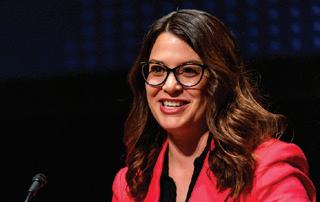


• Mario Simoni, PhD, has been reappointed as Head of the Department of Electrical and Computer Engineering. He has led the area since 2016 and been a member of the Rose faculty since 2001.
• Mathematics professor Wayne Tarrant, PhD, is the next Endowed Chair for Innovation in Science, Engineering, and Mathematics Education, also known as the Innovation Chair. Established by a bequest in 2015, the chair recognizes Tarrant’s work as an outstanding teacher and global scholar.
• Chemistry and biochemistry professor Dan Morris is continuing the legacy of one of the Institute’s outstanding educators as the esteemed Herman A. Moench Distinguished Professor, named for the late 1929 alum. Morris has been a faculty member since 1996.
• Carlotta Berry, PhD, has been reappointed the Lawrence J. Giacoletto Endowed Chair in Electrical and Computer Engineering, established to honor the 1938 Rose graduate. Berry has taught robotics and other subjects since 2006.
• Award-winning professors Mark Yoder, PhD, and Thom Adams (ME, 1990), PhD, retired at the end of the 2023-24 school year. Yoder taught in the Department of Electrical and Computer Engineering for 36 years while Adams was a fixture in the Department of Mechanical Engineering for 25 years.
Award-winning biomedical engineering educator and scholar Renee Rogge, PhD, is now in a new role as the Dean of the Faculty, replacing Russ Warley, PhD, who has returned to a faculty role on campus. Rogge has received the Dean’s Outstanding Teacher Award (2018) and Board of Trustees’ Outstanding Scholar Award (2014) and has been recognized nationally as a capstone design instructor since joining the Rose faculty in 2004. She also was the inaugural Samuel F. Hulbert Endowed Faculty Chair in Biomedical Engineering.

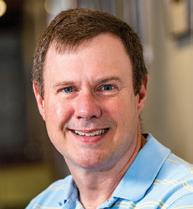
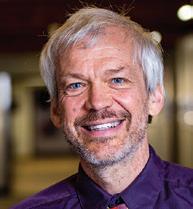
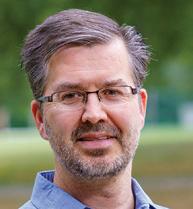
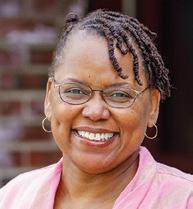

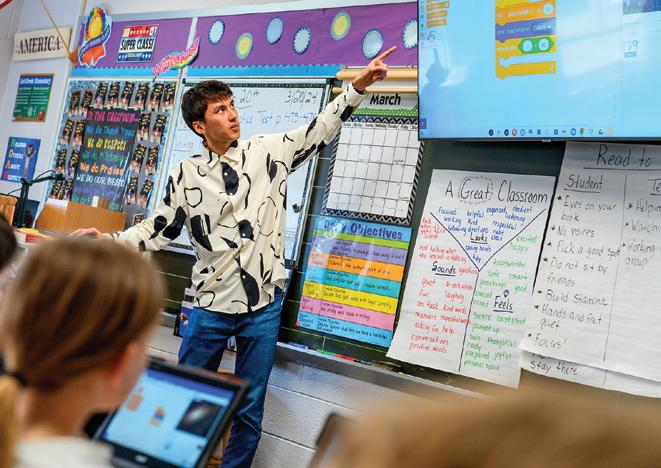
Students have moved to the head of the class to pass along their love of computing and technology onto younger generations through a blossoming educational partnership with two Vigo County School Corporation elementary schools.
A Programming in the Community course led by Computer Science and Software Engineering Professor David Fisher, PhD, (ME, 2000) has small groups of students leading weekly technology sessions in third-, fourth-, and fifth-grade classrooms throughout the school year. The visiting students help mentor the youths on simple exercises and games by using the Scratch programming language. Some of the games have been custommade for the classrooms.
That was the case on an afternoon this spring, as brothers Brian and Andrew Pascente joined Adam Jirovec , Shaun Yamamoto, and Chris Lardner to meticulously guide 23 kids in a Lost Creek
“
Computers
and computing
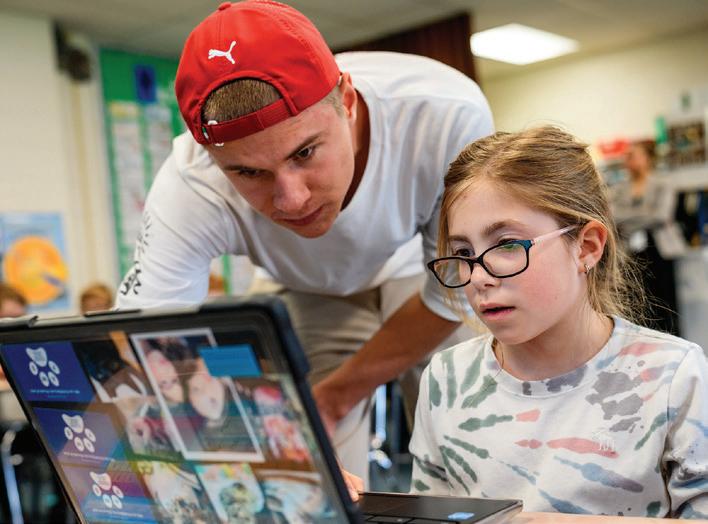
Elementary School third grade class to utilize simple computer programming building blocks to customize aspects of a “Save
The Pets” game——selecting a variety of animals, costumes, scenic backgrounds, and sounds.
“The kids love it. They really look forward to seeing what the Rose-Hulman students are going to bring into the classroom each week,” says the class’s teacher Michaela Gauer.
The same sentiment can be found at Terre Town Elementary School, where Naa Ashifia Anum, Nyomi Morris, Endia Clark, and Remi Schwartz introduced fifth graders into simple engineering programming concepts. The Rose-Hulman students took time to help the kids reflect upon their projects, why the computer programs worked (and in some cases didn’t), and how it could be a building block for future projects.
“My goal is to expose the kids to as many disciplines and possible career routes and this was a fabulous introduction to engineering,” remarks teacher Amy Bennett.
Ninety Rose-Hulman students from all class years (senior through freshmen) and a variety of academic majors made 360 visits covering more than 14,000 minutes of programming instruction at the two schools during the 2023-24 school year. n
are going to be a big part of the (VCSC) students’ world. We want to get them to embrace technology and take advantage of these computing tools that they have at their fingertips.”
David Fisher, PhD (ME, 2000) Rose-Hulman Professor
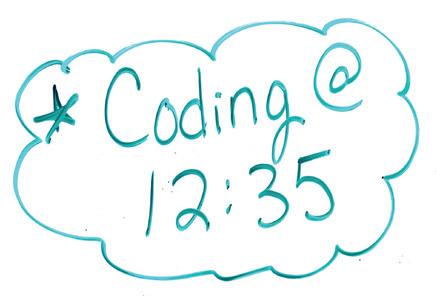
Championship seasons by men’s and women’s teams in golf, swimming, and track and field, along with men’s soccer and tennis helped Rose athletics place first in the Heartland Collegiate Athletic Conference’s 2023-24 men’s all-sports standings and second for this year’s Commissioner’s Cup. The men’s and women’s golf and men’s soccer and tennis teams advanced to their NCAA Division III championship tournaments——only the second time in 26 years for men’s golf.
Featured individual athletic honors this athletic year were:
• Jailen Hobbs (CPE, 2024), Kyle Brownell (CS, 2024) and Tim Youndt (ME, 2024) earned All-American honors for their performances in the NCAA indoor and outdoor national championships. Hobbs placed third in the indoors’ 60-meter dash (with a school-record 6.74 time); Brownell was sixth in the outdoors’ high jump (career-best 6’-9.75”); and Youndt was eighth in the outdoors’ triple jump (career-best 48’-1.75”).
• Junior Vineet Ranade earned second-team All-American honors with a 16th-place finish in the 200-meter freestyle race (1:39.47) at the NCAA swimming championships.
• Other 2023-24 All-Americans were Caleb Urban (BSCE, 2023/MSCE, 2024) in men's soccer, senior Andrew Toler in football, and junior Kade Kline in baseball.
• Golfer Precious Saelee (EE, 2024) joined Hobbs in receiving Ruel Fox Burns Blankets as the top graduating athletes, based on their outstanding career athletic performances. Saelee was a two-time HCAC Women’s Golfer of the Year and four-time NCAA championship qualifier; Hobbs was Rose’s first two-sport All-American (football and track & field) and HCAC Player of the Year in both sports.
Biomedical engineering major Ellen Shales and mathematics major Connor Lane are the latest Rose students to earn distinction as Goldwater Scholars, the preeminent honor for undergraduate students pursuing doctoral degrees in natural science, engineering, and mathematics.
This marks the fourth consecutive year for Rose to have a Goldwater Scholar, and 17 students have earned the distinction since 2004.
Shales’ research work includes an internship with the University of Wisconsin’s behavioral neuroscience laboratory and work in a synthetic biology lab at Rice University.
The Physics and Optical Engineering Department’s renamed NanoEngineering program is a comprehensive curriculum designed to provide students with a strong foundation in fundamental engineering principles, coupled with a deep focus on nanoscale science and technology, including essential modeling and simulation techniques.
Students will engage in hands-on research projects, collaborate with leading experts in the field, and have access to state-of-the-art laboratories——such as the Micro-Nanoscale Device and Systems lab——equipped with cutting-edge nanofabrication and characterization tools. The program will distinguish Rose-Hulman as a leader in preparing the next generation of nanotechnology experts and innovators.
“The NanoEngineering program is not just about staying current; it is about setting the stage for the future,” says Rick Stamper (ME, 1985), PhD, provost and vice president for academic affairs.
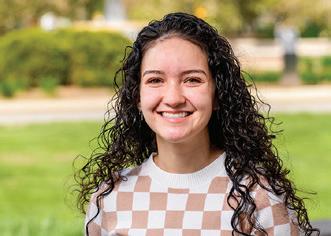
Lane has been involved in several campus research projects and is participating in a Research Experiences for Undergraduates program this summer at Clemson University.
Past Rose Goldwater Scholars have become physicians, researchers at world-respected medical research clinics, experts in industry, and students pursuing PhDs at leading universities.
Lane Shales
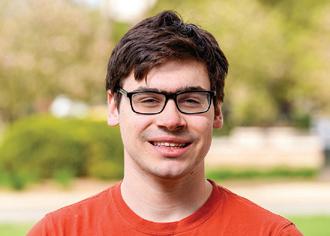
As part of Rose-Hulman’s International Women’s Day and Women’s History Month celebrations, six women faculty provided thought-provoking TEDx Talks that showcased how the interdisciplinary connections within STEM are helping diversify and impact the world and its people.
Topics featured in the 20-minute talks on the Hatfield Hall Theater stage were “Engineering In Context,” by Irene Reizman, PhD, Alfred R. Schmidt Endowed Chair for Excellence in Teaching/Associate Professor of Chemical Engineering; “Mathematics as a Necessary Tool for Decision Making,” by Lucy Muthoni, PhD, Fulbright Scholar-in-Residence, from Kenya; and “Sustainability in Education: Preparing Future STEM Practitioners for a Changing World,” by Jennifer Mueller, PhD, Associate Professor of Civil and Environmental Engineering.
Also, “Under Pressure,” by Soulaf Abas, Associate Professor of Art; “Science or Art? Why Not Both?”, by Nicole Pfiester, PhD, Assistant Professor in Physics and Optical Engineering; and “Making STEM Steamy: Innovative Strategies to Diversify STEM by Using Art,” by Carlotta Berry, PhD, Professor/ Lawrence J. Giacoletto Endowed Chair of Electrical and Computer Engineering.
“Rose-Hulman is the perfect place for people to come together to share engaging ideas that reveal there’s so much more to STEM than just science, technology, engineering, and math,” remarks Berry. The event, replicating similar presentations in 2017 and 2013, was co-hosted by the college’s Women Faculty Thriving organization and led by Professor of English Jessica Livingston, PhD, and Amanda Jo Hobson, PhD, assistant director of the Office of Diversity, Inclusion, and Belonging.

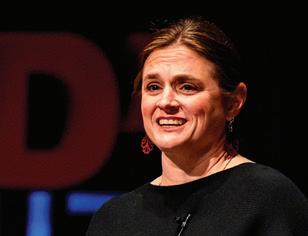


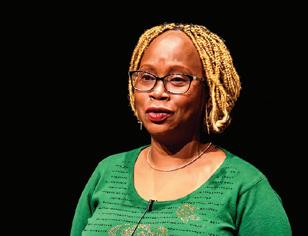

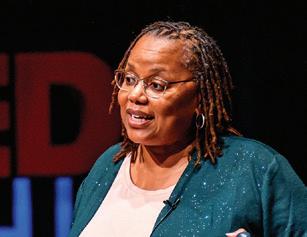

Recent chemical engineering graduates Lauren Coffey and Sanya Dronawat were presented with a unique research opportunity as early as their sophomore year–to work on a project that’s contributed to the development of technology showing promise in preventing the painful rash caused by shingles from spreading in human skin. They spent several weeks in 2022 under the guidance of professors Heather Chenette, PhD, and Irene Reizman, PhD, conducting solubility tests and experiments on FetTech’s Multi-Tissue Platform (MTP) technology, which was originally developed as a regenerative therapy for wounds and burns. Their tests helped FetTech, a Florida-based biotech startup founded by Clay Fette (CHE, 1999), better understand how to develop a topical gel version of the MTP powder to treat skin conditions.

Recent testing sponsored by the National Institutes of Health has now found the MTP gel and powder to be “highly effective” at halting the spread of the Varicella zoster virus that causes shingles in ex vivo human skin samples even when applied several days after infection occurs. Fette sees even more possibilities within the department and the Institute’s Rose-Hulman Ventures product research and development firm to involve students in future projects.
• For the first time, the Rose Rocketry Club successfully launched a rocket in the NASA University Student Launch in Huntsville, Alabama, flying to 4,302 feet above the ground——close to its 4,500-foot goal. The rocket carried a five-pound deployable drone.
• Four computer science students placed third in the undergraduate division of the NCAA’s Crossroads Classic Analytics Challenge after examining customer data from past Division I women’s basketball championship sites to create predictive models for games in all rounds of the 2024 tournament.
• The Human Powered Vehicles Team placed second in the American Society of Mechanical Engineering’s eFest eHPV Competition at Liberty University (Virginia). The team was first in the drag race, earned second-place honors for design, and finished third in endurance race.
• The Battery Workforce Challenge Team placed fifth among 12 North American college teams in the first year of the U.S. Department of Energy-sponsored competition that’s developing innovative battery technology for a Stellantis electric van. Students received Best in Class awards for project initiation plan and Best Subject Matter Expert deep dive.
• The Rose Propulsion Laboratory Group, a liquid rocket exploration initiative of the Rose Rocketry Club, is developing elements of self-landing rockets for the Collegiate Propulsive Lander Challenge.
Successful alumni are encouraging the next generation of entrepreneurs by financially supporting and providing valuable mentorship to support creative and innovative technology ventures being fostered by current students and young graduates.
The Sawmill Society, a growing group of forward-thinking alumni and friends, has established ventureship and angel network funds to help encourage projects to go from the drawing board to a prototype concept and, quite possibly, a viable business. This financial assistance can support students in further developing their projects this summer or providing significant investment for alumni startups. (The angel network is not directly affiliated with Rose-Hulman and is an independent Sawmill Society enterprise.)
A significant portion of this spring’s Sawmill Society Weekend had alumni entrepreneurs having engaging discussions with students about several startup ideas, many resulting from classroom projects, the ESCALATE program, the Rose Innovative Student Entrepreneurs Club, and hand-drawn project concepts created on campus.
These projects included Yamaglide, a bold approach to battery-powered scooters, developed by mechanical engineering students Adam Jirovec and Shaun Yamamoto; StrapTech, a wireless device that allows semi-truck drivers to better monitor the tension on cargo straps, inspired by 2024 mechanical engineering graduates Ayden Ayres, Ike Farnsworth, and Ethan Rogers; and H2Organize, a
unique shower caddy that can provide a cleaner and convenient shower experience, drawn up by engineering design student Deven Wells and classmates Joshua Bumpus , Josh McManus , and Ethan Schurr during this year’s Startup Weekend on campus.
“I continue to be encouraged by the great ideas that students are developing in and out of the classroom, and the entrepreneurial spirit that’s growing across campus,” says Sawmill Society leader Tim Daniel, a 1981 electrical engineering alum and small business development coach. “The Sawmill Society wants to support students and alumni in realizing their dreams.”
The Sawmill Angel Network has provided financial assistance to assist startups by 2017 mechanical engineering alum Tim Balz , 2013 biomedical engineering/ biochemistry and molecular biology alumna Tanya Colonna , and 2012 biomedical engineering/biochemistry and molecular biology graduate Hobey Tam. These enterprises have shown early success.
The Angel Network would like to assist other alumni in future endeavors, according to member Michael Hatfield , a 1984 electrical engineering graduate.
“We just need more proposals from alumni with concrete startups that are investment-worthy. We know that the ideas are out there,” he states. n

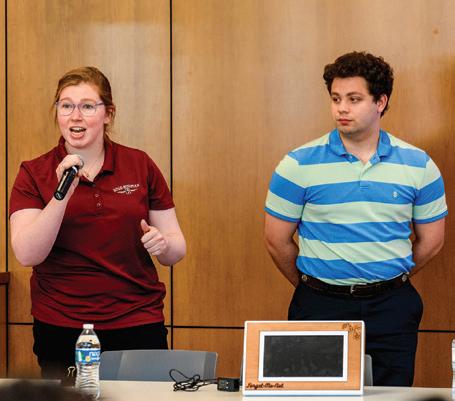

STORY
BY DALE LONG
Exemplifying the spirit of service at the heart of the engineering profession, 2009 civil engineering alumna Elizabeth (Beller) Staryak has a deep sense of compassion and a desire to create a better world.
Her commitment is showcased through 14 years of community service with the New York Junior League (NYJI), earning her the organization’s Outstanding Volunteer Award for 2024.
As a director at large of the Junior League’s Board of Directors, Staryak plays a pivotal role in identifying and implementing initiatives, like domestic violence advocacy or adult financial literacy, that create positive change within her hometown. She has been an advocate for survivors of domestic violence and has helped firstgeneration Americans open credit accounts. Additionally, she has completed two New York City Marathons since 2021 for the NYJL team.
However, Staryak’s passion for service extends to her work with Guiding Eyes for the Blind, a nonprofit organization that provides guide dogs to individuals with vision loss, which is even more inspiring.
Guiding Eyes for the Blind’s mission is to connect exceptional dogs with individuals in need, empowering them with greater independence and mobility. Staryak has taken this mission to heart, dedicating herself to raising her eighth puppy for the program. Her training period with each dog lasts 18 to 24 months. This commitment reflects her profound understanding of the transformative impact these highly trained dogs can have on the lives of those they serve. It’s also how she met her husband, Adam, a fellow guide puppy raiser.

“I spend thousands of hours working to get these dogs ready to make a difference in other’s lives. These aren’t my dogs. They come into my world for a reason—to go out and change their future partner’s life,” she says.
“It’s a small way of making the world a better place, which is my goal in my work as an engineer.”
She is also an active supporter of the Wildlife Conservation Society, demonstrating her commitment to preserving the natural world and protecting vulnerable species.
Professionally, Staryak’s engineering expertise shines as a rail and transit senior project manager with STV Inc. Her leadership as the deputy construction manager on the East River Tunnel Rehabilitation project, a $1 billion endeavor, showcases her ability to tackle complex challenges and deliver impactful solutions. This project, which aims to rehabilitate a vital transportation infrastructure hub within New York City, exemplifies Staryak’s dedication to improving countless lives through her engineering prowess.
Through her diverse personal and professional involvements, Staryak epitomizes the engineering code of service, using the knowledge and skills she gained at Rose-Hulman to create positive change in her community. She serves as a reminder of the profound impact that engineers can have when they embrace their calling to improve the lives of others. n
With a personal and professional passport filled with stamps from across the world, it’s not surprising that 2004 mechanical engineering alumnus Conrad Tucker, PhD, has become a strong advocate for engineers, scientists, and mathematicians to make a global impact.
That mission has taken him to become director of Carnegie Mellon UniversityAfrica’s campus in Rwanda and associate dean for international programs in Africa for CMU’s College of Engineering. At the same time, he is continuing to lead students from throughout the world in making scholarly achievements in machine learning, neuroscienceinspired artificial intelligence, robotics, and biomedical engineering–technical domains that can help enhance human capabilities.
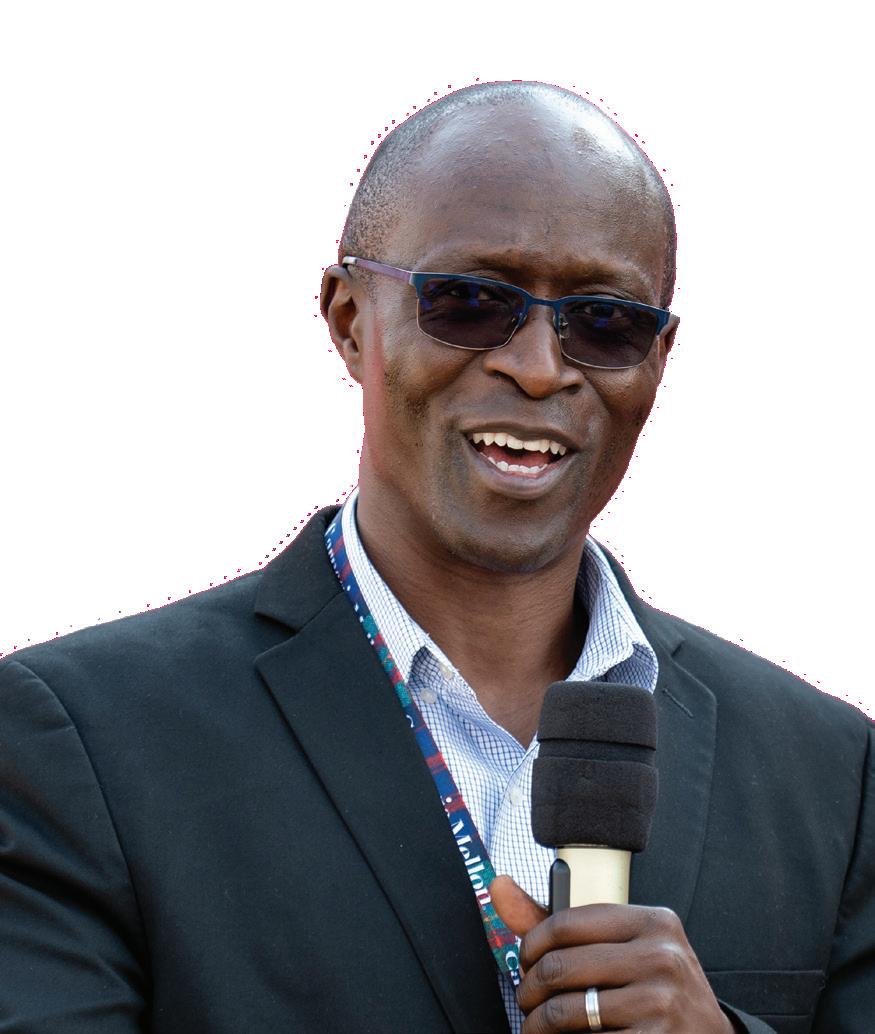
workforce–one of the fast-growing workforces in the world.
Started in 2011 under a partnership with the Rwandan government, CMUAfrica offers graduate degrees, as part of CMU’s College of Engineering, in information technology, electrical and computer engineering, and engineering artificial intelligence. Its student body of more than 300 graduate students from 19 nationalities are addressing a critical shortage of creative and technically
Tucker says, “I have always loved challenges and the idea of giving back on a global scale. I see my work at CMU-Africa as a service to the continent. This provides a new dimension of impact. Over the past decade, I have been focused on impact from a research perspective (writing scholarly publications and mentoring master’s and PhD students). This has been very rewarding. However, now I can have an impact on a continental scale by educating the next generation of African leaders and innovators to make a transformative impact in their communities and the world.”
“ I have always loved challenges and the idea of giving back on a global scale. I see my work at CMU-Africa as a service to the continent. This provides a new dimension of impact.”
Conrad Tucker, PhD (ME, 2004) Director/Professor Carnegie Mellon University Africa

That’s what Tucker has done throughout his own educational journey as the son of a college professor/researcher (father) and elementary school principal (mother). The family escaped internal strife within Sierra Leone along Africa’s western coastline to find refuge in nearby Guinea before eventually moving to America. As a high-achieving high school student in Maryland, Tucker became interested in Rose-Hulman and engineering after enjoying a summer at the college’s Operation Catapult program.




His interest in engineering grew as a Rose student, learning about elements of mechanical systems and robotics, along with earning a minor in economics. Tucker also became involved in a variety of student activities, enjoyed playing ultimate Frisbee games with classmates on the campus’ front lawn, and gave back to Terre Haute through community service projects.
“Rose taught me to strive for academic and professional excellence by pushing your limits while providing the important building blocks for the future. There was a sense of community support and encouragement that every student needed, and has helped us succeed as graduates,” he states.
Tucker reconnected with his former Rose academic adviser Rick Stamper (ME, 1985), PhD, (now the institute’s provost and vice president for academic affairs) during a visit to CMU-Africa last fall as the two institutions explore possible future educational partnerships.
Employing artificial intelligence and machine learning techniques in engineering system design, health care, and education has been the focus of Tucker’s role as a researcher while earning a master’s degree and PhD in industrial engineering at the University of Illinois at Urbana-Champaign, along with teaching for eight years at Penn State University, and four in the Department of Mechanical Engineering at Carnegie Mellon.
Along with his director role at CMU-Africa, Tucker teaches and conducts research on machine learning and directs the Artificial Intelligence in Products Engineered for X Laboratory (AiPEX Lab) at Carnegie Mellon’s Pittsburgh campus. Rose-Hulman alumni Jiatong Zhang (ME, 2021) and Songwei Fan (ME, 2022) have been enrolled in Tucker’s Machine Learning and Artificial Intelligence for Engineers course. His research and education goals are tightly integrated and focus on advancing personalization, both from a design and learning perspective.
“We’re experiencing a monumental paradigm shift in technology, not only in the innovations of these technologies but the speed of which they are progressing,” he says. “Where we’re going is up to us as researchers and decision-makers — to decide how these technologies are going to be used or integrated to impact people’s lives ... The path of a researcher and educator is not just to give back knowledge to students, but to engage in research that you’re hoping will transform the world and have a global impact.” n

STORY BY DALE LONG
Etook several deep breaths while recounting the details of an inspirational five-year journey that was filled with gratitude, perseverance, love, and personal reflection — for himself and several others that benefitted from someone else’s selfless gift.
After all, there was a time when the 1983 mechanical engineering graduate was a fixture of good health as a former Fightin’ Engineer basketball player and recreational cyclist.
Then, every breath became a struggle.
The effects of pulmonary fibrosis deteriorated Eric’s lung capacity to such a state that he couldn’t perform a simple breathing test, his listless body could hardly move around his home in Greenwood, Indiana, and he needed to take a leave of absence as an experimental test engineer with Rolls-Royce Corporation — his career for 38 years. He had developed a wicked cough, lost his appetite (dropping 30 pounds within nine months), and his fingertips had taken on a bluish hue from oxygen deprivation within his blood stream.

constantly out of breath, gasping for air, and became a shell of my old, happy self,” Eric recalls.
Then, the conversation took on a serious tone as the 62-year-old states, “I was a dead man walking.”
A double-lung transplant through the Indiana Donor Network and doctors at Indianapolis’ Methodist Hospital was the only solution. He was considered a “perfect” recipient, with no past health problems.
“All that I had was a bad set of lungs,” Eric says.
Now all he needed was the “perfect” donor.
“I used to love taking long hikes with Stephanie (his wife) at state and national parks, admiring the beautiful scenery and wonders of nature. I’d take bike rides with my three sons and really liked coaching a homeschool basketball team. Then, over the course of three years and without any rhyme or reason, I went to being
That happened on November 30, 2018, after the death of Chase Crompvoets, an athletic California 18-year-old who had been attending Chicago’s DePaul University, following a seizure.
At the same time, lying in the hospital bed was Eric with Stephanie, a former Rose-Hulman cheerleader, nearby as a constant, loving companion. The couple and other

family members had been through the emotional rollercoaster of possibly finding a prospective donor just three weeks earlier.
And they knew that there might not be another chance.
Chase’s lungs arrived and surgery started in the early morning hours of December 1 with a team of doctors and staff working feverishly to make the successful transplant. Every second mattered.
A day and a half later, Eric was wide awake and breathing on his own. He soon had enough energy to start taking daily walks around the hospital, building up his stamina each day.
“Within minutes (after the surgery), I immediately noticed more of a natural color coming back to his fingers and lips. He was returning to me,” said Stephanie.
Eric left the hospital on December 18 and began physical therapy and a constant watch on whether his body would accept Chase’s gift of life.
Soon after arriving home from the ordeal, Eric wrote a Thank You letter to the Indiana Donor Network in hopes that it would get to anyone associated with the donor. “The Network passes along any letters, but there are no guarantees that anything will come from them. I understood that, but I just needed to express my sincere gratitude and report that their loss, however tragic, had helped give life to another. We were so grateful.”
Two other letters followed before a response finally came from Chase’s mother, Kelly Crompvoets, nearly four years after the transplant (December of 2022). The correspondence started with the heart-felt sentiment: “I have been trying to write this letter for four years …”
Then in February of 2023, Eric and Stephanie traveled to California to meet Chase’s family. The special reunion took place in the family’s home, surrounded by photos and memories of a teenager who had registered as an organ donor (unbeknownst to his family).
“Everything about our time together was surreal,” Eric recalls. “We wanted to know everything about Chase, and they were happy to oblige. We found out what a special young man he was. And they were so happy to see that I was doing so well.”
This is a special feel-good human interest story — one that’s been featured in the Indianapolis Star and other newspapers throughout the country. Eric and Stephanie now tell their inspirational story at church, college, and community events throughout the state in support of the Indiana Donor Network. They hope that more lives are saved by others on donor registries throughout the country. (Chase’s heart was given to a young mother of two boys in her final stages of


congenital heart disease; his liver went to another patient, and his kidneys were donated to two different people. All those recipients are still alive today.)
“I believe there’s a reason why I’m still here and able to enjoy my wonderful life. It’s divine intervention along with the support of family, friends, doctors, nurses, and physical therapists. And there was a lot of medical technology, created by engineers and scientists, that contributed to my well-being. I’m a very fortunate man who has a new zest for life.” n
“I believe there’s a reason why I’m still here and able to enjoy my wonderful life ... I’m a very fortunate man who has a new zest for life.”
— Eric Sheets (ME, 1983) | Lung Transplant Recipient
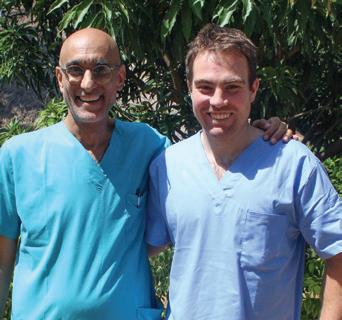
Gary Ulrich volunteered his orthopedic medicine skills during a two-month medical journey to help patients at Mother of Mercy Hospital in the remote Nuba Mountains region of Sudan in Africa.
LSTORY BY LEAH SINGER
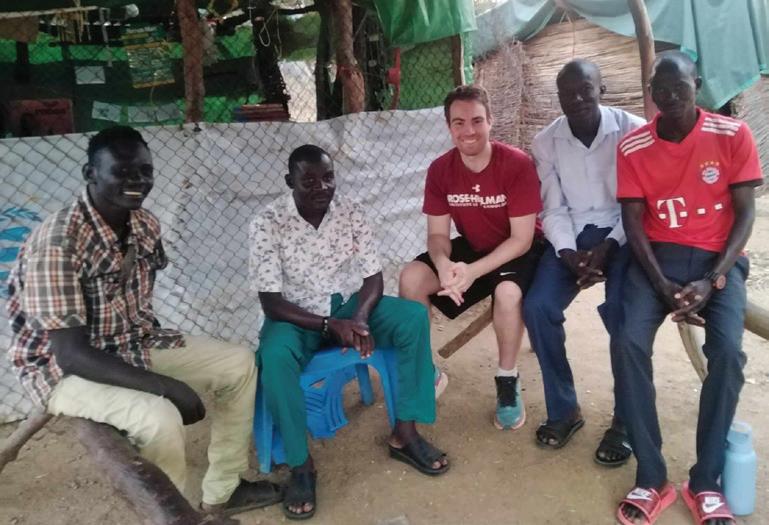
iving the principles of the medical profession’s Hippocratic Oath, Gary Ulrich, MD used his medical and engineering skills to help forgotten people residing within the depths of the war-torn Nuba Mountains region of Africa’s Sudan countryside. Ulrich, a 2017 biology alumnus, spent two months on a volunteer medical journey that changed his outlook on medicine and humanity..
It can take up to two days to make the 20-mile trek on pothole-covered dirt roads from Sudan’s capital city to the mountainous village of Gidel. The area is so remote that COVID-19—the virus that seemed to be everywhere—did not make it to this part of the world.
A bright spot within the region is Mother of Mercy Hospital, led by its lone doctor, Tom Catena, MD, whose life’s mission has been to serve the needs of the region’s 1.3 million people.
Ulrich was inspired to join Catena and his work after hearing about the Mother of Mercy Hospital during a
presentation in Rose-Hulman’s Hatfield Hall Theater in 2019. Catena was recognized for his life’s work by Terre Haute’s Union Health system, where he completed a family medicine residency in 1999.
“Hearing his selfless life work inspired me,” says Ulrich. “And I think it’s important to challenge yourself and put yourself in uncomfortable situations to grow and become more well-rounded.”
Ulrich’s two months in Sudan were filled with handson physician work and learning how special it is to be a doctor and master a craft (orthopedics) that can impact people’s lives.
In one case, he helped save the leg of a Sudanese People’s Liberation Army soldier who had sustained a severe gunshot wound while fighting for his Nuba homeland.
“In the United States, with an open gunshot wound, the protocol is that antibiotics and a tetanus shot are given within three hours,” Ulrich recalls. “Dr. Catena’s breadth of what he can do is below the knee amputation, which is what this soldier was facing. But I had some experience with orthopedic rotations,

“ Being in the presence of the Nuba people has taught me so much. I have undoubtedly become more grateful and humble with what I have been given in my life.”
— Gary Ulrich, MD (BIO, 2017)
and I offered to do a primitive orthopedic surgery to save the leg.”
Ulrich’s external fixation procedure called for metal pins to be inserted into the bone above and below the injury location. These pins were then attached to a metal bar outside the body, and the external fixator frame kept the injured bone stable and aligned throughout the healing process. Additionally, Bill Rhodes, MD, a visiting plastic surgeon from Kenya, performed a cross-leg flap, which involved covering the open gunshot wound with healthy tissue from the patient’s uninjured leg.
This was the first external fixation procedure completed at Mother of Mercy Hospital. The soldier has since healed and has regained full use of his leg.
The lack of CT scans and MRI machines at the Mother of Mercy Hospital (common equipment at United States’ hospitals) meant that Catena and Ulrich had to rely heavily on hands-on patient examinations. This further improved Ulrich’s diagnostic skills, and he was able to practice orthopedic procedures in a new way.
that’s been tackled. The most common viable option is amputation.”
Ulrich always knew he wanted to be a physician. As the son of a retired orthopedist, he grew up seeing the impact a physician can have within a community. Ulrich chose Rose and its biology program because the college’s rigorous education would be ideal preparation for medical school. He also feels RoseHulman ingrained in him qualities of perseverance and integrity along with a strong work ethic that have prepared him for a medical career and life.
After graduation, he earned a medical degree from Indiana University’s School of Medicine and has started a one-year surgical internship this year at the University of Toledo’s Medical Center.

Gary Ulrich had to overcome several challenges to provide medical services to a variety of patients in Sudan.
“The orthopedic breadth of what we can do over there is very limited,” remarks Ulrich. “The sterilization techniques are not up to par; so, if someone needs orthopedic work, we can use plates and screws for fractures. But replacement surgery is not something

During medical school, Ulrich spent a summer in Leeds, England, learning about the development of modern total hip replacement techniques and was part of a surgical team that replaced a woman’s hip. She was up and walking pain free within a day after the surgery.
“That experience is when it clicked for me that our craft can change lives,” states Ulrich. “Seeing that impact on my own really convinced me to be an orthopedic surgeon.”
Eventually, Ulrich would like to continue incorporating global outreach and service into his orthopedic practice.
“Sometimes people view service work primarily from the perspective that you are doing a good deed for the people you are helping. … But for me, it’s the opposite,” says Ulrich. “Being in the presence of the Nuba people has taught me so much. I have undoubtedly become more grateful and humble with what I have been given in my life … to witness the perseverance of the Nuba people and the selfless life work of Dr. Catena has been an honor.” n
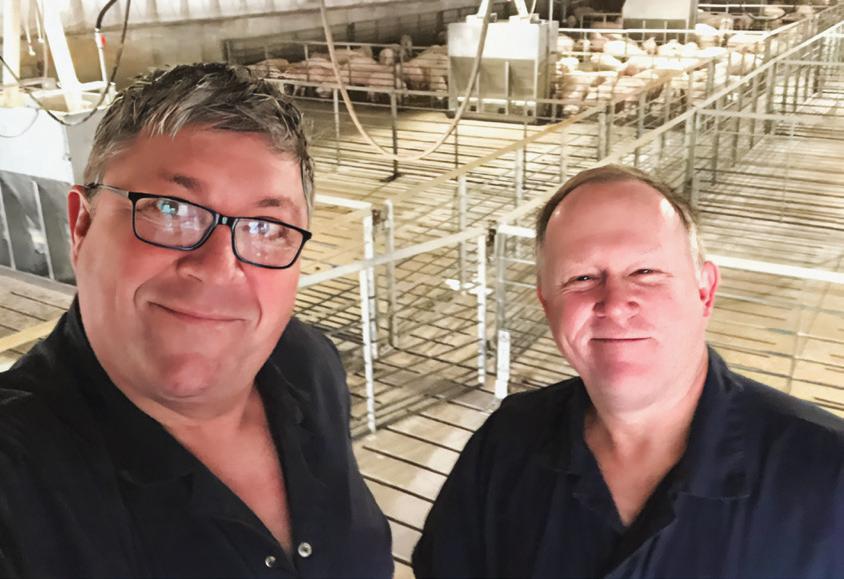
After nearly three decades on parallel career paths in industries like pharmaceuticals and utilities, 1992 chemistry graduate Tom Baker and 1989 electrical engineering alum Patrick Thomas have joined forces and thought processes in an unconventional consulting firm, Pathom Inc. The firm is pioneering a Value Discovery Methodology approach that brings innovative solutions for a growing list of clients worldwide.
Their quick understanding of each client’s situation through intensive observation, data analysis, and handson experimentation allows them to rapidly pinpoint and test potential solutions before deciding on the most impactful options. Pathom’s structured problem-solving processes has roots in Lean Six Sigma and integrates concepts from the science and psychology of creativity and innovation, like understanding cognitive bias.
“Value Discovery is designed to efficiently get low-cost, low-risk solutions that maximize value,” says Thomas, the company’s president and holder of 17 patents. “We love applying this approach in new ways. Sometimes it really challenges the robustness of our approach.”
STORY BY DALE LONG
Baker, the chief executive officer, adds, “There’s a different way to consult that avoids the massive capital outlays, uncertainties, and standardized solutions associated with traditional consulting. Our methodology embraces more of a venture capital-style approach to deliver realistic, achievable ideas with maximum payoff at low cost and risk to the client.”
Pathom cites more than 1,300 occasions where their real-world solutions have delivered $514 million in value to clients in 33 countries.
For instance, the company’s Life Highlights visual tool is helping skilled nursing home facilities provide person-centered, highquality medical care for senior citizens impaired by Alzheimer’s. Baker comments, “My mother struggled with dementia for five years. Life Highlights will make the world a better place for seniors in care.”
By observing workflows and understanding a U.S. protein producer’s company culture, the alumni duo uncovered ideas that boosted productivity by $16 million. In another case, they accelerated the launch of a utility company’s continuous improvement program, which was falling behind schedule. Pathom’s analysis revealed ways to increase the program’s pace, quality, and engagement, generating hundreds of new improvement ideas.
Additionally, Thomas and Baker used thermal imaging and experiments with local materials to create micro-climate solutions, allowing poultry farmers in India to better control living conditions for their flocks. This improved the farmers’ quality of life by eliminating the need to constantly stay with the birds.
By combining technical knowledge from their Rose education with insights gained across multiple industries over decades, Baker and Thomas are pioneering a nimbler, more cost-effective approach to tackling business challenges. Their passion remains making things better through an entrepreneurial lens on strategic change. n
BY PROFESSOR EMERITUS HERB BAILEY
This summer’s challenges have once again been compiled by Associate Professors of Mathematics Tim All, PhD, Sylvia Carlisle, PhD, and John McSweeney, PhD. They are alternating problem compositions with Herb’s son, Mark Bailey (CHE, 1976).
In the game of cribbage, when counting points in their hand, a player gets: two points for each different pair, and for each different run of cards (a “run”’ is a sequence of three or more cards in order), they get a number of points equal to the length of the run. There are other ways to score points in cribbage, e.g., by making sums of 15, but in this question, we will focus on just these two rules.
Here is the question: Imagine you have four cards in your hand: The 10 of hearts, 10 of spades, 9 of diamonds, and the 8 of clubs (a classic “double run of 3.’’) These four cards alone give you eight points: two for the pair and three apiece for each of the two different runs of three you can make. In cribbage, there is also a fifth card (the “starter”) common to all players that you may use to make points. Would it give you more points, according only to the point rules we’ve stated here, to have that common fifth card be a third 10 or another nine?
You’re given a rectangle of height 2 and some unspecified width w > 2.
You’re going to draw two circles: one is the largest circle that you can fit inside the rectangle, and the other is the smallest circle that the rectangle can fit inside.
What should the width of the rectangle be for the larger circle to have exactly 10 times the area of the smaller one?
Provided by Wolfgang Pelz, PhD (MA, 1971)
Based on the problem explanation, there can only be one number with two digits, so the other must be a single digit.
• Factoring 161 gives the factors 7 and 23.
• Therefore, the correct value of ‘a’ must be 32. Finally, the product of ‘b’ and the ‘corrected a’ is 224.
SOLUTION:
Provided by Rich Priem (ME/MA/CS, 1979)
Julie's speed is roughly one (1.05) meter per second. Formula for circumference is linear: C = 2*Pi*R, while the formula for extra distance is also linear; dC = 2*Pi*dR Speed is dC/T and Velosity = 2*Pi * 6 Meters/36 Seconds = Pi/3 M/ Answer: Pi/3 M/S ~= 1.048 meters per second (Asanaside,Iteachthistokidsrunningtrack.)
Consider the following dialogue …
Rosie: Let me show you a magic trick. Think of a positive whole number, but don’t tell me what it is.
Chauncey: Got it.
Rosie: Multiply it by 2, then divide by 3, then round to the nearest whole number. Did you round up, down, or not at all?
Chauncey: Not at all.
Rosie: Great. Take that whole number you just got and repeat: multiply it by 2, then divide by 3, and round. This time did you round up, down, or not at all?
Chauncey: This time I rounded up.
Rosie: Great! Now, divide this last whole number by 4 and round down if needed. What number did you get?
Chauncey: 16.
Rosie: Aha! Your original number was ... What number did Chauncey think of?
WINTER BONUS PROBLEM SOLUTION:
Provided by Jeff Koechling (ME, 1980)
The tangent points are pi/3 from horizontal.
• The tangent segments are each 4sqrt(3), contributing 8sqrt(3).
The band wraps around the big circle for angle 2(pi - pi/3) = (4/3)pi, arc length 8pi
The band wraps around the small circle for angle: (2/3)pi, arc length (4/3)pi
Total is 8sqrt(3) + 8pi + (4/3)pi, or 8sqrt(3) + (28/3)pi, which is about 43.178
Send your solution to BaileyChallenge@rose-hulman.edu or to: Dale Long, CM 14, Rose-Hulman Institute of Technology, 5500 Wabash Ave., Terre Haute, IN 47803. Alumni should include their class year.
Congratulations to the following solvers of the winter problems:
ALUMNI: T. Jones, 1949; C. Ambuehl, 1958; T. Clark, 1958; D. Bailey, 1959; B. Perkins, 1960; R. Checkley, 1961; L. Hartley, 1961; J. Ray, 1961; J. Tindall, 1961; A. Cleek, 1964; S. James, 1965; B. Radecki, 1965; P. Carter, 1966; J. Andis, 1968; R. Dutton, 1969; R. LaCosse, 1971; W. Pelz, 1971; S. Sample, 1971; G. Houghton, 1972; C. Martens, 1972; R. Collins, 1973; R. Kominiarek, 1973; J. Walter, 1973; D. Frick, 1974; T. Rathz, 1974; S. Bryant, 1976; B. Hunt, 1976; J. Schroeder, 1976; R. Arney, 1978; D. Hoffman, 1978; R. Strickland, 1978; P. Hahn, 1979; R. Priem, 1979; J. Slupesky, 1979; J. Koechling, 1980; L. Smith, 1980; S. Stroder, 1980; J. Farrell, 1981; P. Gunn, 1981; S. Nolan, 1981; M. Taylor, 1982; D. Batta, 1983; D. Churilla, 1983; B. Geene, 1983; S. Hall, 1983; J. Marum, 1983; K. Shafer, 1983; T. Fresher, 1987; D. Johnson, 1987; M. Lancaster, 1987; M. Nigrovic, 1987; B. Seidl, 1987; C. Abdnour, 1989; L. Cox, 1989; J. Jachim, 1989; T. Rademacher, 1989; J. Harrell, 1990; G. Smith, 1990; B. Stelle, 1990; B. Burger, 1991; R. Hochstetler, 1991; C. Hoffart, 1991; P. Kimmerle, 1991; C. Schlimm, 1991; R. Wilkinson, 1991; J. Zamora, 1991; G. Hall, 1992; K. Koziol, 1992; J. Sherrard, 1992; B. Swanson, 1992; R. Antonini, 1993; W. Haas, 1993; K. Neilson, 1993; J. Markwardt, 1995; C. Ware, 1995; T. Westbrook, 1996; A. Heap, 1997; C. Mills, 1998; M. Pilcher, 1998; C. Ehrhart, 1999; J. Mathison, 1999; G. Pool, 1999; K. Beto, 2000; A. Primozich, 2000; D. Shafer, 2003; B. Hirsch, 2004; B. Linden, 2004; J. Somann, 2004; S. Galler, 2005; S. Tourville, 2005; V. Rocsniak, 2006; R. Solotke, 2006; T. Homan, 2007; J. Krall, 2007; C. Eley, 2008; G. Shields, 2008; I. Weintraub, 2009; B. Pease, 2010; M. Rooney, 2011; P. Lee, 2012; J. Schmidt, 2012; B. Lackey, 2013; B. Wern, 2014; J. Khusro, 2016; J. Kwak, 2016; R. Wern, 2017; M. Peterson, 2018; R. Oberlitner, 2020; G. Wight, 2020; and J. Ansari, 2023 FRIENDS/STUDENT: P. Baum, T. Cutaia, A. Danesh-Yazdi, L. Gaintner, G. Gstattenbauer, M. Hall, H. Kominiarek, R. LeMay, J. Marks, L. Metcalfe, R. Puttre, E. Robertson, J. Robertson, B. Schacht, J. Walsh, and E. Wern
The Alumni Association bestowed special honors this spring to alumni, faculty, staff, and a student in recognition of their accomplishments that have brought honor and distinction through their outstanding career work and dedicated volunteer efforts to their communities and the Institute.
The association’s highest alumni award recognizes exceptional achievement in any field and service to society.
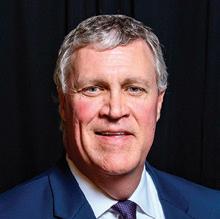
Rob Hochstetler
Electrical Engineering, 1991
A distinguished professional in the energy sector, Hochstetler has been president and chief executive officer with Central Electric Power Cooperative, Inc., based in Columbia, South Carolina, since 2014. His 30-year career has evolved from a plant engineer to a leader adept at managing complex facilities and navigating corporate strategy, safety, and environmental stewardship.

Watch the 2024 Alumni Awards ceremony at rb.gy/hoj7e3
This honor highlights alumni whose professional achievements have brought distinction to themselves, credit to Rose-Hulman, and benefit to their communities.
Brian Leyes
Mechanical Engineering, 1999
A 25-year career in leadership positions with DaimlerChrysler, Chrysler Group LLC, Fiat Chrysler Automobiles, and Stellantis now has him leading North America initiatives for net-zero emissions. He formally was chief engineer for Jeep Wrangler vehicle development and he’s executive sponsor for Stellantis’ Rose-Hulman recruiting team.
Jennifer (Anderson) Mrzlack
Mechanical Engineering, 2002
Experiences in renewable energy, HVAC, power transmission equipment, and consumer goods have made her a valuable voice in sustainable energy resources. She is president with the PSG Group and has started a consulting group that’s helping meet clients’ business and operational goals in a sustainable and impactful way.
Roy Primus
Bachelor of Science – Mathematics, 1975
Master of Science – Mechanical Engineering, 1977
A 43-year career of research/development in reciprocating engines with the General Electric Global Research Center brought 56 U.S. patents and several industry awards. His pioneering publications in second law analysis techniques laid the foundation for identifying inefficiencies in engine systems and reducing CO2 emissions.

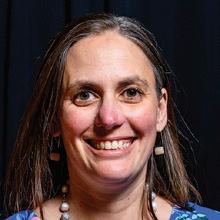
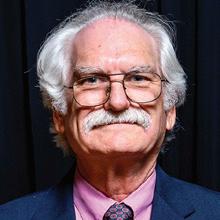
Recognizing alumni who have achieved significant success in their first 10 years after graduation in the areas of career achievement, community service, and dedication to Rose.
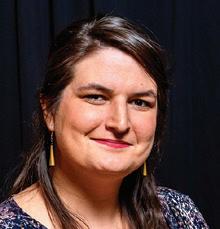

Marie Stettler Kleine, PhD
Mechanical Engineering/International Studies, 2014
As an Assistant Professor in Colorado School of Mines, she challenges students to critically engage in their work, particularly emphasizing the roles of values in engineering’s pursuit to “do good.” Her collaborative federally funded research focuses on critical pedagogy and inclusive engineering for community development.
Luke (Lujia) Zhang
Computer Science/Software Engineering/ Mathematics, 2017
He leads the rapid prototyping team with Resultant, a data/technology research consulting firm, and played a key role in aiding Indiana’s pandemic response. He also serves on the board of directors for many not-for-profit organizations and earned the TechPoint Resilience Award at the tech community’s 2024 Mira Awards program.
Honoring alumni who have donated significant time in their volunteer efforts to Rose, toward STEM education advancement, in professional/ industrial groups and organizations, and within their community.

Olivia (Ejde) Horne Computer Science, 2020
She has an impressive early-career path as a software engineer/intern manager with Google, after working with Microsoft, has her specializing in the design/development of Google’s Dataproc, a service for open-source big data analytics. She also has supported Rose and the Google Develops Academy.
Honoring faculty and staff members for demonstrating strong and selfless commitment to the Institute, professional achievement, and dedication to the betterment of their respective departments.
Dan Morris, PhD Professor of Chemistry and Biochemistry

Janie Szabo Interim Human Resources Director
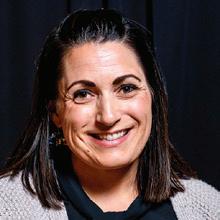
Recognizing alumni employees whose work elevates Rose’s mission, strengthens alumni-Institute connections, and advocated lifelong relationships with the Institute.
Eric Reyes, PhD Mathematics/Economics, 2006
The Associate Professor of Mathematics has led efforts to reform Rose’s statistics curriculum and been an advocate for remote learning opportunities and non-traditional grading systems. He also serves on various committees on campus and is currently a faculty representative to the Board of Trustees.
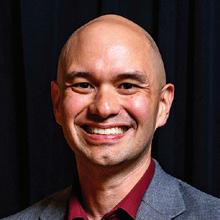
Recognizing an outstanding student who exhibits excellence in academics and character while demonstrating a strong commitment to Rose’s initiatives.
Ben Brown Civil Engineering, 2024

Rose-Hulman alumnus and trustee, Terre Haute businessman, and philanthropist Gregory L. Gibson (BSCE, 1984/HDENG, 2017) received the Chapman S. Root Award, presented by Hospice of the Wabash Valley to honor individuals whose generosity and leadership have enhanced the quality of life in the region.
Hospice of the Wabash Valley has been one of Gibson’s longest charitable associations. He has served as its board chairman for 35 years. “His steadfast dedication to the agency and its mission has helped countless Wabash Valley families over many years. His leadership also brought the Gibson Family Inpatient Hospice Center to our community,” Hospice stated in a news release announcing the award.
Gibson’s business interests have included commercial real estate development; the hospitality, gaming, and food service industries; trucking, excavation, and coal; solid waste; and advisory services. He has served on the Indiana Judicial Nominating Commission and Ports of Indiana Commission, the nominating board of the Indiana Utility Regulatory Commission, and currently is chairman of the Terre Haute Convention and Visitors Bureau and president of the Terre Haute Business Development Association. Gibson also is secretary of the Rose Board of Trustees and has been a trustee for more than 30 years.
Joseph A. Gustin (ME, 1971) is chief financial officer with the Indiana Department of Transportation after being its senior director of finance. He has been with INDOT since early 2005 following nearly 30 years in the electric utility industry with IPALCO Enterprises, Inc.
Al Shipp (EE, 1978) has been named to the Board of Directors with Airmeez, a company developing artificial intelligence-driven customer engagement solutions. He has more than 40 years of tech management experience, retiring as president and chief executive officer with 3VR Security and formerly being vice president with Apple’s Enterprise Group.
Robert W. Pease (CHE, 1980) has been appointed to the board of directors with Phillips 66. He has more than 38 years of experience in the energy industry, with leadership roles at Shell Trading Company, Motiva Enterprises, and Cenovus Energy.
Gregory Muse (CHE, 1982) is president and chief operating officer with PennEnergy Resources, a privately held natural gas exploration and production company based in Pittsburgh.
Christopher J. Anderson (PH, 1984) is coordinator of the College of Southern Idaho’s observatory.
Harry N. Makridakis (CHE, 1984) is now the plant manager at Primo Water Corporation’s production facility in Chicago. He formerly managed plants for Duraco, Crescent Brands, and NBG Home.
James F. Pigford (ME, 1986) is chief executive officer with Syensqo’s Synorb battery materials division. He formerly spent nearly seven years as vice president of corporate strategy with Solvay.
Phil D. Pokorny (EE/MA/CS, 1987), chief technology officer with Penguin Solutions, was featured in a panel discussion among immersion cooling technology industry experts at the Supercomputing 2023 conference.
Kenneth W. Roberts (ME, 1988) is a member of the board of directors with the National Kitchen & Bath Association. He has been president with Atlas Roofing Company since August of 2023 after being in leadership roles with Delta Faucet Company.
Timothy P. Zimmer (ME, 1988) has become the assistant public works director for the City of Charleston, Illinois, after serving as director of facilities, planning, and management at Eastern Illinois University for 10 years.
Brian D. Coate (EE, 1990) has retired after 20 years as the first vice president with Tullahoma Utilities Authority’s electric and fiber division in Tullahoma, Tennessee.
Brian K. Kochersperger (CE, 1990) has returned to the company that originally hired him after graduation, being an engineer and estimator with E&B Paving’s office in Noblesville, Indiana.
Alan A. Manche (EE, 1991) started his term as chair of the Electrical Safety Foundation’s Board of Directors. He is vice president of external affairs with Schneider Electric’s North America operations.
Trent D. Meyers (ME, 1991) is the vice president of life sciences central and process industries with E Tech Group, leading operations in a variety of production areas. He has more than 30 years of experience in engineering and manufacturing operations, previously being vice president of project delivery and general manager with Jedson Engineering.

1958/HDENG, 1997).
Troy O. Cooprider (EE, 1992) has been appointed chief technology officer with Stoneridge, Inc., after being its vice president of global technology. He has more than 30 years of automotive electronics industry experience in leadership roles with Stoneridge and being executive director of engineering with Aptiv.

Kenneth J. Koziol (CE, 1992) has been promoted to president of The Garrett Companies’ EDGE Multifamily Design Group, a company specializing in landscape architecture, interior design, and procurement for multifamily and mixed-use projects.
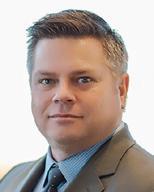
Mark B. Kraeling (EE, 1992), solutions architect with GE Transportation, was among the Internet of Things experts making presentations at the IoT Solutions World Congress 2024 in Barcelona, Spain.
David W. Bailey (ME, 1993) is a senior principal mechanical engineer with Intuitive Surgical Inc., where he has worked since 2004.
Brian C. Dougherty (BSEE, 1993/MSEMGT, 1999) was inducted into Terre Haute South High School’s Hall of Distinction. He has helped build Indiana’s technology sector as senior director of Rose-Hulman Ventures since 2018.
Brian S. Poole (CHE, 1993) has been promoted to general manager with CF Industries after having a variety of leadership roles within the company since 2017.
Toby L. Thomas (ME, 1994) is now chief operating officer with FirstEnergy Corporation, being responsible for a broad range of transmission and distribution business functions to serve customers across six states. He has worked in the energy sector since 2001, with engineering and executive roles at AEP and Indiana Michigan Power.
Eric C. Potter (EE, 1994) is general manager of general industries and automotive segments with Fanuc America, an industrial robot maker.
Pat Goodwin (CE, 1995) is co-owner of the 12 Points Public Market, a business in a historic neighborhood in Terre Haute, his hometown.
Michael Meneghini (CE, 1995), MD, received the Vigo County School Corporation’s 2024 Circle of Honor award for being a high school graduate from the district who has earned career distinction. He is founder and chief executive officer of the Indiana Joint Replacement Institute and is recognized nationally and internationally as a leading expert on joint replacement.
Jason T. Durst (ME, 1996) is now vice president with Dell Technologies, the latest leadership role with the company since 2019. He has worked in supply chain performance, business transformation, and product marketing for the company since 2000.
Matthew E. Meiser (EE, 1996) is now the MES project manager with Apex Manufacturing Solutions. He had spent more than 16 years in a variety of leadership positions with Gray Solutions.
James J. Barry (ME, 1999) is executive vice president and president of Bio-Rad Laboratories Inc.’s life sciences group. He has been with the company since 2017, previously being senior vice president of global manufacturing and leader of quality systems operations.
Captain Andrew M. Cain (ME, 1999) is the new commanding officer of the USS Ohio nuclearpowered ballistic submarine after serving as military assistant to the National Nuclear Security Agency’s undersecretary for nuclear security.
Chadd F. Jenkins (EE, 1999) is the chief executive officer with Parke County REMC, an energy cooperative serving customers in six west-central Indiana counties. Christopher N. Repa (CHE, 1999), PhD, earned a doctorate in cultural and educational policy studies from Loyola University in Chicago. He has been a high school and community college science instructor in suburban Chicago for the past 20 years.
Ronald C. Larcom (EE, 2000) is a senior software engineer with VISIE Inc., formerly known as Advanced Scanners. He had led computer vision operations with Pensa Systems.
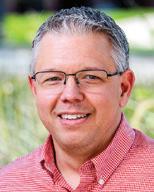
Jason L. Zielke (BSME, 2000/MSEMGT, 2002) is chief product officer with SVP Worldwide in Nashville, Tennessee, working with such iconic brands as Singer, Husqvarna Viking, and Pfaff. He had led robotics engineering and product management with Stanley Black & Decker for two years.
Wes J. Bolsen (EE, 2000) is chief executive officer with Imidex, a startup examining the use of artificial intelligence for the early detection of lung cancer. He is a serial entrepreneur who has helped secure over $500 million in venture and non-dilutive funding for his past companies.
Michael S. Gramelspacher (EE, 2001) was named an Unsung Hero in People at Play’s Toy & Game International Excellence Awards after helping his SG Labs organize an Innovator Club for St. Clare School in O’Fallon, Illinois.
Dustin Sapp (CPE, 2001) is chief executive officer with Traction Ag Inc., a cloud-based farm accounting software company. He has nearly 25 years of Software
as a service industry experience as a former leader with Formstack and Octiv.
Erica (Snyder) L. Buxton (CHE, 2002) has returned to the Razor USA leadership team, serving as president. She was the scooter company’s chief operating officer and chief financial officer in 2020-21.
Bill McKenna (CS/MA, 2002) received the 2024 Jess Lucas Alumni Leadership Award for career accomplishments, and service to the community and Rose-Hulman. He earned a law degree and is a partner with the Woodard, Emhardt, Henry, Reeves and Wagner law firm.
Heidi E. (Brackman) Davidson (CHE, 2003) is director of engineering with Universal Fibers, Inc., after nearly seven years in a variety of leadership roles with Eastman, a materials company.
Sid L. Stamm, (CS, 2003), PhD, has been promoted to professor of computer science and software engineering at his alma mater. He leads Rose’s cybersecurity program and a seminar series that brings industry experts to campus.
Emily S. (Timperman) Burton (ME, 2005), a safety project leader with Honda America’s research and development operations, has started a three-year term as the vehicle manufacturer representative to the National Child Passenger Safety Board. She is also co-chair of the board’s data committee.
Julie M. (Knoll) Mendez (CHE, 2005), PhD, received an outstanding teacher award as a clinical associate professor of mechanical engineering at Indiana University’s campus in Columbus, Indiana. She has been a member of the faculty since 2015.
Matthew D. Lovell (CE, 2006), PhD, has been promoted to professor of civil and environmental engineering at his alma mater, while also being senior director of the Office of Institutional Research, Planning, and Assessment. He has been on the Rose faculty since 2011.
Caterpillar Inc. has promoted Jason E. Kaiser (EE, 2000) to group president for energy and transportation segments, featuring construction and mining equipment, off-highway diesel and natural gas engines, industrial gas turbines, and diesel-electric locomotives. He is responsible for Solar Turbines subsidiary.
Since joining Caterpillar after graduation, Kaiser has held numerous roles in engineering, sales, and operations with increasing responsibility across the electric power business. He recently has been senior vice president of the electric power division. “Jason’s extensive experience in engineering, product management and operations makes him well-suited to lead our Energy & Transportation segment,” stated Caterpillar Chairman and Chief Executive Officer Jim Umpleby (BSME, 1980/HDENG, 2016). “Jason leads with our values at the forefront and will continue to make a positive impact within E&T and across our broader Caterpillar team.”

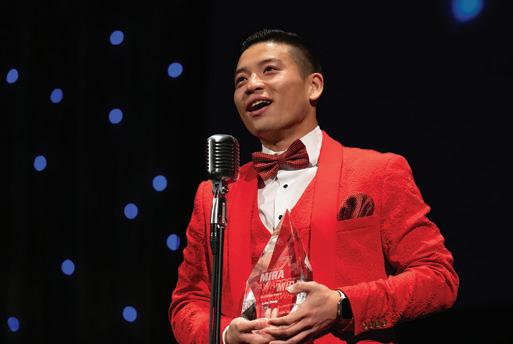
Luke Zhang (CS/SE/MA, 2017) received the Resilience Award at this year’s Mira Awards gala, a TechPoint program recognizing those individuals and companies bring innovation to Indiana’s technology sector.
At 16, Zhang left China to chase the American dream. His journey featured attending a private high school in the U.S. and then earning the three degrees from Rose-Hulman, with high academic honors, before opting to work in Indianapolis, as software developer/data scientist with DemandJump and Resultant, over Silicon Valley tech opportunities.
Mira Award judges credited Zhang’s perseverance and a long and growing list of accomplishments and community work, despite a variety of challenges, as standing out above others who have overcome their own significant challenges to thrive in the Indiana tech community. He also was a Rose-Hulman Alumni Association’s Distinguished Young Alumni Award recipient this spring. (See list on Page 37)
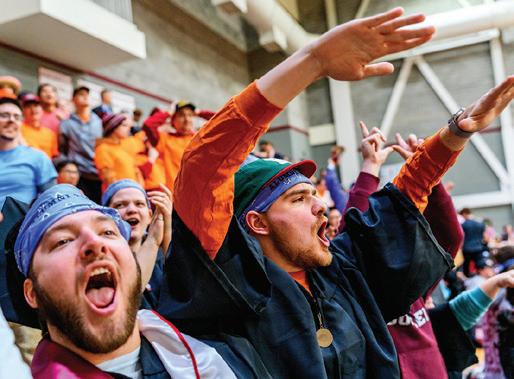
Cole A. Marr (CE, 2006) is now a partner with Sensiba LLP after being the research and development director with the California-based accounting and business consulting firm. He has 18 years of experience helping businesses in technology, biotech, and manufacturing industries.

Jason A. Hutchings (SE, 2007) has been promoted to senior director of product management with GitHub, where he has worked since 2018. He formerly was a senior program manager with Microsoft.
Dray McFarlane (CS, 2007) is co-founder of Tasio, a consulting company that focuses on helping associations retain members through artificial intelligence-driven data analysis.
Aaron J. Szczesny (BSME, 2007/MSEMGT, 2011) is now the director of engineering for gas projects and programs with ENTRUST Solutions Group, formerly EN Engineering. He has worked for the company since 2005.
Danielle (McCauley) Able (BE, 2008) is senior operations manager with Amazon’s Arlington, Virginia, operations center. She has worked for the company since 2021 after being in manufacturing leadership roles with Campbell Soup Company.
David P. Bander (AB, 2008) is the executive director of the Emelin Theater for the Performing Arts in Mamaroneck, New York. He formerly managed the Kirkland (Washington) Performance Center.
Paulo Dutra e Mello (MSEMGT, 2008) is leading Telamon Corporation’s collaborative robotics division.
Michael P. Matsui (SE/CS, 2008) is a staff software engineer with Clear Street, a New York City-based diversified financial services company.
Emily M. (Zeigler) Nelson (BSCE, 2008/MSEMGT, 2017) has been promoted to water resources department manager with the Lochmueller Group’s Indianapolis office, where she has worked since 2020.
Jessica (Toth) L. Long (CE, 2009) has been promoted to global head of sustainability with LivaNova, where she had been a senior director with a variety of business divisions. She is helping the company understand and meet increasing regulatory and legal requirements in environmental, social, and governance operations.

Andrew J. Pinkstaff (CE, 2009) received the 2024 5 Under 40 award from the Knox County (Indiana) Chamber of Commerce for his contributions to public service and community outreach. He is a construction area engineer with the Indiana Department of Transportation and has earned certification as an associate construction manager from the Construction Management Association of America.
Nate P. Richter (ME, 2009) has been promoted to president for Movu, formerly the Stow Group, where he has worked since 2022. He is supervising the robotics company’s U.S. operations.
Praveena (Theertham) Ward (BE, 2009) is operational excellence manager with Renovo Solutions after having division manager roles with Agilent Technologies and Beckman Coulter Life Sciences.
For the first time, a team of alumni returned to recapture their college years and capture top honors in the Office of Student Affairs’ annual Greatest Floor Competition——working together to complete 24 events over the course of 24 hours, including the popular “mystery event,” during the middle of the winter. Team members were Vibha Alangar (BSCS/SE, 2018; MSEMGT, 2020), Jordan Asman (ME, 2022), Worden Barr (CPE, 2021), Tanner Barrera (BE, 2020), Nathan Brooks (EE, 2016), Landon Bundy (MA, 2022), Ethan Carson (CE, 2020), Kiana Caston (CS/SE, 2019), Caige Comstock (ME, 2023), John Crutchfield (ME, 2020), Faith Cummins (CHEM, 2023), Timmy D’Avello (MA/CS, 2020), Jack DeValk (ME, 2020), Emily Dougherty (CPE, 2021), Kevin Ferguson (ME/MA, 2020), Antonio Gaido (BSME, 2020/MSEMGT, 2022), Susan Harmet (SE, 2022), Peter Householder (BSCE, 2021/MSCE, 2022), Matthew Kadnar (BSME, 2022/MSME, 2023), JJ Lay (ME, 2023), Ka Seng Lim (ME, 2020), Eric Liobis (BSCE/MA, 2012; MSCE, 2015), Cherise McMahon (CS, 2021), Christian Meinzen (CS/MA, 2022), Carter Myers (CPE, 2022), Reyd Nguyen (CPE/CS/MA, 2020), Conner Ozatalar (ME/EE, 2022), Marissa Perez (BE, 2020), Connor Ray (CHE/CHEM, 2020), Karl Reese (CPE/CS, 2020), Kyle Rhodes (SE/PH, 2010), Abbey Schmitz (CHE, 2023), Allison Shi (EE, 2021), Brionna Slaughter (CS, 2021), Justin Smerigan (OE, 2021), Cory Snyder (CPE, 2022), Alex Walker (BSME, 2020/MSEMGT, 2022), and Sam VanDenburgh (BSCPE, 2022/MSECE, 2023).
Brianna N. Butchart (CHE, 2010) is the finished product business unit manager at International Paper Company’s manufacturing plant in Bogalusa, Louisiana.
Megan M. (Gasser) Miller (CE, 2010) is a lead bridge project engineer with Crescent Engineering & Mapping.
Emma E. Barrasso (EP, 2011) is the integration management director with Owens Corning, where she has worked since 2018.
Rev. Tyler C. Kreipke (BE, 2011), PhD, was ordained into the priesthood of the Congregation of Holy Cross in Notre Dame, Indiana. He is teaching at the University of Portland’s Shiley School of Engineering and formerly taught engineering classes at the University of Notre Dame as well as doing religious outreach in South Bend, Mexico, and Portland.
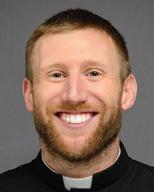
Molly K. Rice (CE, 2012) is a construction section manager with HNTB, where she has worked since 2015.
Kris J. Morton (CHE/BCMB, 2013) has been promoted to director of business development after being a senior proposal writer with Scorpius BioManufacturing Inc. He formerly was a commercial operations manager with Catalent Pharma Solutions.
Joseph D. Wimmer (ME, 2013) is the senior applications engineering manager of electrical systems with Gamma Technologies.
Peter J. Harper (BE, 2014) is director of operations and engineering with IBC Coating Technologies Inc., where he has worked since 2014.
Hallie (Drake) C. Pygman (BE, 2016) has started a two-year term on the Board of Directors with INAD Warriors, Inc., a non-profit drawing awareness to the INAS genetic pediatric disorder. She has worked eight years in the medical device industry and leads the philanthropic outreach team with Medtronic’s office in Plainfield, Indiana.
Kajun W. Miller (CE, 2020) is project branch management chief with the Directorate of Public Works for Fort Johnson, Louisiana. He formerly worked as a design and project engineer in the wastewater industry.
The entrepreneurial spirit, problem-solving skills, and drive for success that carried Tim Balz (ME, 2017) through Rose has paved the way for career success as the co-founder and chief executive officer of Kalogon, a startup that’s invented the world’s first smart cushion that’s empowering people to lead active, seated lives. This success brought him recognition as recipient of the Institute’s 2024 Tom Mason Innovation Award, presented during this spring’s Sawmill Society Weekend (see story on page --).

The Kalogon Cushion uses patented sensor technology to continually adapt to the needs of the user, giving people the ability to sit longer and pursue activities they were unable to before. The cushion has been approved by the Centers for Medicare & Medicaid Services to bill Medicare for services——helping expand the product’s potential market.
Based in Melbourne, Florida, Kalogon’s product development efforts have been enhanced through the Sawmill Society Angels venture investment group, several Rose alumni as current and past company employees, and students assisting during co-op and internship work opportunities. Learn more about the company at www.kalogon.com
The Tom Mason Innovation Award honors those ventures, founded or led by Rose students and alumni, whose innovativeness and social desirability bring distinction and admiration to alumni, their startup, and Rose-Hulman. Mason was a member of the Rose-Hulman faculty and administration for 38 years (1972-2010) as a professor of economics and engineering management, vice president of business and finance, and co-founder of Rose-Hulman Ventures.
Blending technical excellence, accountability, thirst for growth, and ingenious zeal, alumnae Elizabeth A. Lienhart (ME, 2006) and Madeline P. Crews (MA/ ECON, 2019) have earned distinctions for their civilian work that supported America’s military operations.
Lienhart was named the government’s 2024 Civilian Engineer of the Year for her contributions as director of planning, design, and construction business and resources within the Naval Facilities Engineering Systems Command’s Washington, D.C. office. She contributed to the design management of a more than $300-million executive hangar project for the U.S. Air Force’s Joint Base Andrews, Maryland.
During the last 12 years, Lienhart has provided financial and budget management, data analysis, and contract portfolio management on a variety of projects, including biomedical labs, hospitals, processing plants, and office buildings. She lives in Cincinnati, Ohio.
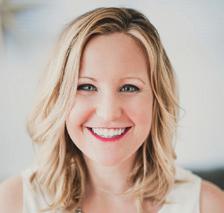
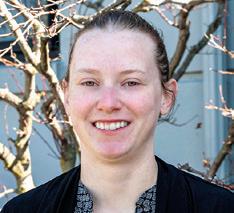
Meanwhile, Crews received Naval Sea Systems Command’s Innovation Award for her work as an operations research analyst with the Naval Surface Warfare Center’s Crane, Indiana, Division. She designed and developed a new business intelligence dashboard for the Center’s Human Capital Key Performance Indicators. This first-of-its-kind development created easier access to important information so stakeholders can make better decisions.
To build this tool, Crews worked with each functional area within the Human Resources Office. The Innovation Award nomination package stated, “This innovative solution positively impacts the organization by greatly increasing efficiency and effectiveness in these areas.”
John T. Newlin (CE, 1943), 102, died December 31, 2023, in Terre Haute. He was a professor at Rose-Hulman before becoming president of a family real estate business, Newlin Johnson Company, Inc., for more than 50 years. He was president of the Indiana Chapter of the Appraisal Institute and Terre Haute Board of Realtors.
Lubo (Lou) Chelich (EE, 1944), 100, died December 26, 2023, in Albuquerque, New Mexico. He retired after a 35-year career with Inland Steel Company.
Charles (Charlie) R. Fox (CE, 1944), 100, died April 8, 2024, in Terre Haute. He retired after working for Ayrshire Colliery/AMAX Coal Company for 47 years.
Robert R. Atherton (EE, 1950), 94, died September 6, 2023.
Norman C. West (CE, 1950), 99, died December 31, 2023, in Anderson, Indiana. He retired after 42 years as an engineer with the Indiana Department of Transportation, being a project engineer for the Interstate 69 and Interstate 70 projects.
Daniel A. Swartz, Sr. (CE, 1951), 95, died December 10, 2023, in Brazil, Indiana. He was president of the Colonial Brick Corporation for more than 50 years after working with Wasson Coal Company and Arketex Ltd.
Seibert (Seib) D. Thomas (ME, 1951), 99, died March 28, 2024, in Terre Haute. He retired as a plant engineer at Pfizer’s manufacturing plant in Terre Haute.
Ronald L. Brunner (CHE, 1952), 93, died June 18, 2023, in Long Beach, California. He retired as manager of safety and health with Shell Chemicals.
Mac Fehsenfeld (BSCHE, 1952/HDENG, 1995), 93, died November 17, 2023, in Indianapolis. He retired after 35 years as chief executive officer with Crystal Flash Petroleum.
W. Rex Hauser (CHE, 1954), 92, died June 16, 2023, in Hudson, Wisconsin. He retired after a 42-year career with 3M Company.
Robert J. Lebrock (ME, 1955), 90, died August 28, 2023, in Louisville, Kentucky. He worked with North American Aviation and Naval Air Warfare Center.
Howard P. Freers (BSME, 1948/HDENG, 1990), 97, died January 30, 2024, in Novi, Michigan, after a lifetime of contributions as a faithful Rose-Hulman trustee, dedicated engineer with a prolonged love for the Ford Motor Company, and devoted family patriarch. His career in the automotive industry started with the Chrysler Corporation after graduation, but his most important contributions came during a 33-year career with Ford. Freers was the company’s Chief Car Engineer from 1971-75, leading the development of the iconic Boss 302 Mustang, earning him the affectionate title of the “Boss of 302.” He earned such honors as Society of Automotive Engineers Fellow and Distinguished Senior Member along with Engineering Society of Detroit Fellow. Survivors include grandson Fred Freers (ME/MA, 2010), cousin Jim Freers (ME, 1957), and nephew Jerome Hoover (ME, 1965).
Myron J. Clark, Jr. (EE, 1956), 89, died March 8, 2024, in Lebanon, Indiana. He retired after 34 years as an engineer with Indianapolis Power & Light Company.
Charles W. Kallis (ME, 1957), 89, died April 9, 2024, in Peachtree City, Georgia. He spent his entire career as an engineer with Ethyl Visqueen.
William H. Payne (ME, 1958), 88, died January 13, 2024, in Buffalo, Wyoming. He retired as a computer room manager with Mountain Bell Telephone Company before becoming a rocket engineer with Martin Company and Habitat for Humanity volunteer.
Richard (Dick) L. Trueb (EE, 1958), 88, died February 28,2024, in Birmingham, Alabama. He retired as chief executive officer with Polar-Bek Company after spending 25 years with Mead Corporation.
Robert W. Hall (CHE, 1959), PhD, 86, died February 16, 2024, in Hondo, Texas. He was a professor emeritus of operations management after a 33-year career as a professor with Indiana University’s Kelley School of Business. He was a founding member of the Association for Manufacturing Excellence, edited the organization’s Target publication, and was the group’s first lifetime achievement award recipient. He also was awarded a lifetime achievement gold medal from the Society of Manufacturing Engineers.
W. Kenneth Hollingworth (EE, 1959), 85, died November 10, 2023, in Severna Park, Maryland. He retired as an electrical engineer and senior design engineer with Westinghouse Electric Corporation.
Barton L. Gronberg (ME, 1960), 83, died March 10, 2023, in Carol Stream, Illinois. He spent a majority of his career with
Illinois Bell Telephone Company and AT&T Inc.
Lt. Col. James R. Montgomery (CHEM, 1960), 84, in Dallas. He retired after long career as a chemical engineer with Monsanto and then became owner of a video production company. At age 71, he earned a doctorate degree.
Gary W. Phipps (EE, 1960), 85, died March 17, 2024, in Red Bank, New Jersey. He retired after 35 years in a variety of roles with AT&T, Inc.
Louis H. Roehm (CE, 1960), 84, died September 12, 2023, in Lakewood, Colorado. He retired after working 30 years with the U.S. Bureau of Reclamation, specializing in restoring concrete dams.
Fred J. Wernicke (EE, 1960), 85, died January 13, 2024, in Kansas City. He retired after working with Grainger Inc., Curtiss Candy Company, and Mars Inc.
Morris L. Cleverley, Jr. (CE, 1962), 86, died February 17, 2024, in Jensen Beach, Florida. He owned Cleverley Engineering and CNY Consolidated Contractors, entities that designed and built projects throughout the Northeastern United States.
W. David Starnes (CHE, 1962), 82, died September 15, 2023, in New Holland, Pennsylvania. He retired as operations
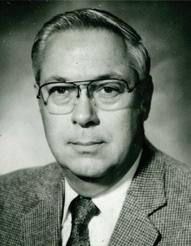

manager with Castrol Industrial North America.
Alfred L. Story (MA, 1962), 83, died May 13, 2024, in Danville, Illinois. He had a successful career as an aeronautical engineer with McDonnell-Douglas Astronautics Company, Boeing, and NASA. His expertise in guidance and navigation control systems was instrumental in developing the Gemini and Apollo space programs. Later, he worked on the telemetry parameters for Skylab, and guidance software for the Space Shuttle.
David A. Dumford (EE, 1963), 82, died December 9, 2023, in Naperville, Illinois. He was an engineer with Western Electric and Lucent Technologies before becoming a Habitat for Humanity volunteer, helped build 23 homes.
Manfred (Skip) R. Franke (EE, 1963), 82, died March 25, 2024, in Greenfield, Indiana. He was a senior engineer with Trilithic Inc.
Edward V. Trunk (ME, 1963), 91, died April 7, 2024, in Middletown, Pennsylvania. He worked at Penn State University’s Capital Campus.
Jack D. Cox (CE, 1964), 84, died January 20, 2024, in Escondido, California. He operated his own civil engineering business, JCox Associates, after working with Troy Belting & Supply, Hunter Machine, Pfizer, and Ethyl Visqueen.
William J. Kestermeier (BSME, 1951/HDENG, 1984), 93, died November 22, 2023, in Fort Myers, Florida. He retired after being a vice president of global quality control during a 40-year career with the Bendix Corporation. He also spent many years as a Rose-Hulman trustee and a high school and National Football League official.
William R. Fenoglio (BSME, 1961/HDENG, 1987), 84, died March 24 in Indianapolis, leaving behind a legacy of integrity and compassion for life and Rose-Hulman. He was a trustee for 32 years and served as its chairman from 2009-13. Fenoglio had a variety of management positions during 23 years with General Electric Company, leaving in 1984 as vice president and general manager of the component motor division. Later, he was president and chief operating officer with Barnes Group before retiring after two years as president and chief executive with Augat, Inc.
Richard (Dick) H. Jensen (CHE, 1964), 80, died September 15, 2023, in Wilmington, Delaware. He was a research fellow with the DuPont Company for 35 years.
Larry A. Sachs (MA, 1966), 79, died January 9, 2024, in Columbus, Ohio. He retired after 30 years of administrative and faculty support to the Ohio State University College of Medicine and School of Allied Medical Professions. He helped establish Generalists in Medical Education, a national medical education organization, and served as a statistical consultant with the American Journal of Gynecology.
David P. Laws (CE, 1967), 78, died November 15, 2023, in Fort Wayne, Indiana. He was president of InSite Inc. and Pollution Control Systems.
Michael H. Mefford (CHE, 1968), 77, died November 12, 2023, in Scottsdale, Arizona. He worked in research and development with MillerCoors brewery in Golden, Colorado.
Charles (Chuck) D. Moseman (CHE, 1973), 72, died March 13, 2024, in Terre Haute after returning to his hometown following a 30-year career with Shell USA, Inc.
Harold H. Welsh, Jr. (ME, 1973), 72, died December 6, 2023, in New Tripoli, Pennsylvania. He was an engineer with Mack Trucks Inc. for more than 25 years. Richard W. Stultz (ME, 1975), 71, died April 12, 2024, in Bluffton, Indiana. He was operating manager with Miller Roofing, a family business, for more than 20 years.
Lucius A. (Gus) Taylor (ME, 1976), 69, died June 11, 2024, in French Lick, Indiana. He was a chief engineer at Naval Surface Warfare Center’s weapons systems division in Crane, Indiana, and was a recipient of the Honor Alumni award in 2021. Taylor served as a lieutenant colonel in the Army, retiring in 1995.
Gregory A. Keck (EE, 1978), 69, died January 28, 2024, in LaGrange, Georgia. He had several jobs and acquired tech skills that had him traveling throughout the country.
David Hollinden (EE, 1980), 65, died December 31, 2023, in Ann Arbor, Michigan. He worked at RCA before pursuing a career in music composition, studying at Indiana University and University of Michigan. His compositions were played by university students throughout the world.
Brian J. Fowler (EE, 1981), 64, died December 27, 2023, in Spring, Texas. He retired after specializing in natural gas turbine engine development, primarily with Kellogg, Brown & Root, Inc.
Thomas P. Furlette (EE, 1982), 63, died November 29, 2023, in Suwanee, Georgia. He was director of business development with IS International Services LLC.
Jay C. Bartlett (EE, 1984), 61, died January 18, 2024, in Carmel, Indiana. He retired as Chief Executive Office of Wabash Valley Power Alliance and also had leadership roles with Prairie Power Alliance and the City of Springfield, Illinois.
R. Allen Shotwell, PhD, (PH, 1988), 57, died November 19, 2023, in Bologna, Italy. He was a professor at Ivy Tech Community College’s Terre Haute campus for 36 years.
Eric J. Glover (CE, 1990), 55, died December 30, 2023, in LaGrange, Ohio. He worked as a civil engineer and was a running enthusiast.
Michael (Ed) E. Eckert (EE, 1991), 55, died March 15, 2024, in Lexington, Kentucky. He had a variety of positions before settling into being a supply chain manager.
Scott M. Goedde (CHE, 1991), 54, died March 15, 2024, in Houston. He was a technical leader with E I duPont de Nemours and Company and formerly worked with ExxonMobil Corporation.

Stephen R. Brannan (ME, 2009), 37, died November 16, 2023, in Brazil, Indiana. He was a firearms instructor and owner/operator of ProTEQ Custom Gear, specializing in holsters.
Robert Bergman, 84, died January 29, 2024, in Spring Hill, Florida. He was inducted into the Rose-Hulman Athletic Hall of Fame for leading championship football and track and field teams as head coach from 1968-76.
Buck F. Brown, Sr., PhD, 91, died January 7, 2024, in Ninety Six, South Carolina. He was Head of the Department of Electrical and Computer Engineering and first Dean of Research and Graduate Studies during 19 years on the Institute faculty.
Charles W. Ennis , 65, died January 23, 2024, in Terre Haute. He was an adjunct instructor in civil engineering after being a professional consultant and local community leader.
Harry L. Gordon, Sr., 80, died December 5, 2023, in Terre Haute. He retired after 33 years with the Facilities Operations’ housekeeping staff for several campus buildings. He is survived by his wife, Frances, who was also a longtime member of the housekeeping staff.
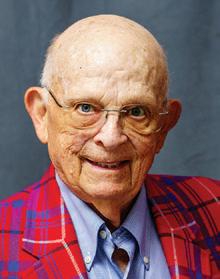
John (Jack) Kinney, PhD, 91, died on December 24, 2023, in Colorado Springs, Colorado. He was a mathematics professor at Rose-Hulman for 25 years, specializing in probability and statistics. He authored several scholarly articles and four textbooks, created the curriculum for the popular AP Statistics course, and helped start the Institute’s first computer summer camp, Camp RETUPMOC.
Pauline E. LeMay, 96, died May 12, 2024, in Chesterfield, Indiana. She was a residence hall housekeeper for several years.
Jeffrey M. Malloy, 44, died June 9, 2024, in Terre Haute. He was Interim Director of Major Gifts for the Office of Institutional Advancement. Malloy joined Rose-Hulman in 2017 as a Major Gifts Officer, and was known for his enthusiasm, passion, and energy in both his professional and personal life.
Nancy L. Neice, 76, died May 1, 2024, in Terre Haute. She retired as manager of the Office of Administrative Services’ postage processing center.
Michael D. Samara, 76, dies April 26, 2024, in Burlington, Vermont. He served as co-director of residence life and director of counseling services in the Office of Student Affairs during the mid-1970s.
Isaac D. Smith (HDLAW, 1983), 91, died November 25, 2023, in San Diego. He retired as a major general in the U.S. Army after commanding Army ROTC units and other military operations in several regions of the country.
Wilford (Wil) P. Stratten, PhD, 81, died February 8, 2024, in Terre Haute. He was a life sciences professor for several years in the Department of Humanities, Social Sciences, and the Arts.
Louis (Lou) W. Harmening, Jr., 84, died March 22, 2023, in Terre Haute. His quick wit, concern for others, and professionalism were traits that earned the respect of faculty, staff, and students during a 31-year career as Rose-Hulman’s registrar and an associate professor of America literature, retiring in 2001. He and his wife of 61 years, Jan, established a scholarship fund to support students along their Rose-Hulman journeys.

Jesica (Petretti) Beccue (CHE, 2005) and husband, Adam D. Beccue (ME, 2006), welcomed their second daughter, Colbie Kay, on November 28, 2023. The family lives in Colorado Springs, Colorado. Jesica is a global engineering manager with Fujifilm and Adam is a lieutenant colonel in the U.S. Air Force.

Celeste L. (Kline) Huster (BE, 2015) and husband, John C. Huster (ME, 2014), had a daughter, Sophia Lorraine, on October 3, 2023. The couple lives in Blaine, Minnesota, where John is president of Sofos Robotics & 3D.

Benjamin H. Klick (CE, 2016) and wife, Emily, had their second child, a daughter, Norah Lynne, on December 12, 2023. The family lives in Indianapolis. Ben is a preconstruction manager with Wilhelm Construction.

Hardy Spry (CS, 2004) and wife, Danielle, welcomed twins Franklin Gerald and Jack Donald on October 2, 2023, in Plainfield, Indiana. Hardy is the MuleSoft team lead with Studio Science.

Jack R. Tift (ME, 2015) and wife, Ali, had their first child, Margo, on November 22, 2023. The family lives in Minneapolis, where Jack is a Lean manager with Mortenson Construction.

Cassidy (Cain) Duffy (ME, 2016) and Tyler Duffy (SE/ECON, 2016) welcomed their first child, son Grayton, on July 4, 2023. The family resides in Zionsville, Indiana. Grayton is the grandson of Michael Cain (ME, 1985).

Allison B. (Parrent) Wood (ME, 2016) and husband, Joseph L. Wood (CPE, 2016), welcomed their second daughter, Ellie, on November 2, 2023. The family lives in Frankfort, Kentucky. Allison is a vehicle integration engineer and Joe is a driver assist software supervisor, both with Ford Motor Company.
Jordan A. Irvin (CE, 2017) and wife, Kristen, welcomed their second baby girl, Brighton Grace, on December 15, 2023. They reside in their hometown of Amherst, Ohio. Jordan is a project manager with the Cleveland Clinic.
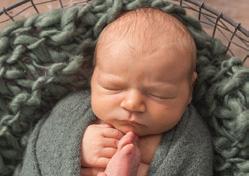
Zachary O. Foote (CS/SE 2019) and wife, Ashley, welcomed their first daughter, Harper Grace, on November 10, 2023. The couple lives in Bloomington, Minnesota, where he works with Edgile.


Tyler A. Haas (ME, 2018) and wife, Leah, had their second child, a son, Mason, on October 13, 2023. The family lives in Jasper, Indiana.

Jason C. Meyer (CHE, 2019) and fiancé, Chase, had their first daughter, Della Rose Young Ja, on January 23, 2024. The family lives in Indianapolis, where Jason is a senior validation engineer with CAI consulting agency.

A. Cole Supp (ME, 2019) and Sydney J. Black (ME, 2019) were married on July 30, 2023, in the mountains outside Salt Lake City, Utah. They live in Dayton, Ohio, where Cole and Sydney both work in the aerospace industry. Erik Hayes (BSME, 1997/MSME, 2001) officiated the wedding. Other alumni in the wedding party were Zachary O. Foote (CS/SE, 2019), Kyle Washburn (PH, 2017), Sydney J. Woodard (CHE, 2019), Amanda M. (Sixt) Bartee (ME, 2018), and Alexa (Kovacs) Myers (MA/ECON, 2020).


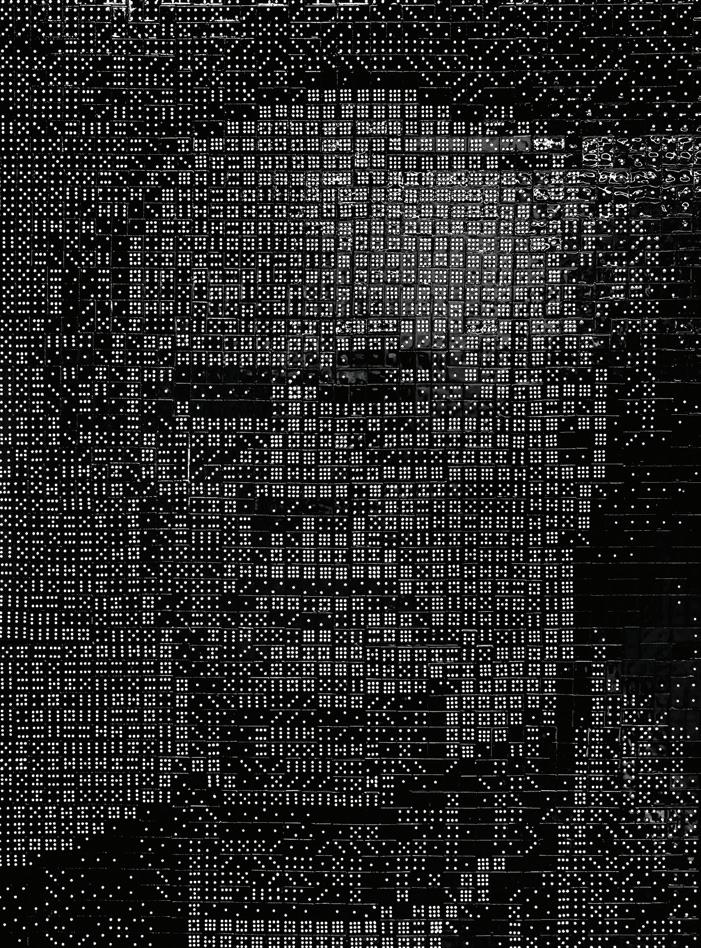
Art and mathematics converge in a unique mosaic of our founder, Chauncey Rose, created with 1,320 dominoes. The Art Office, led by Art Curator Christy BrinkmanRobertson, assembled and funded the piece with the assistance of 20 students, faculty, and staff over 10 hours this spring. The project was supervised by Josh Holden, PhD, culminating his three-year term as the Endowed Chair for Innovation in Science, Engineering & Math Education. The domino template was generated using discrete linear optimization mathematics problems by visiting award-winning artist and writer Robert Bosch, PhD, who is also a professor of mathematics at Oberlin College (Ohio). This artwork can be found near the Department of Mathematics office in first-floor hallway on the north end of Moench Hall.

